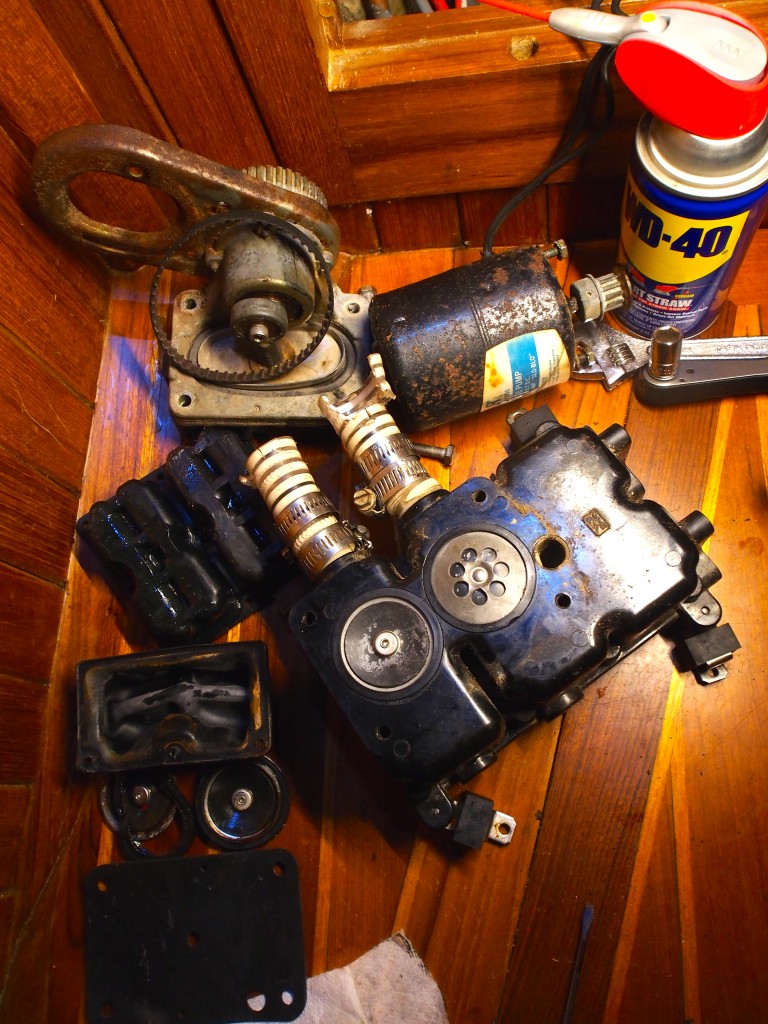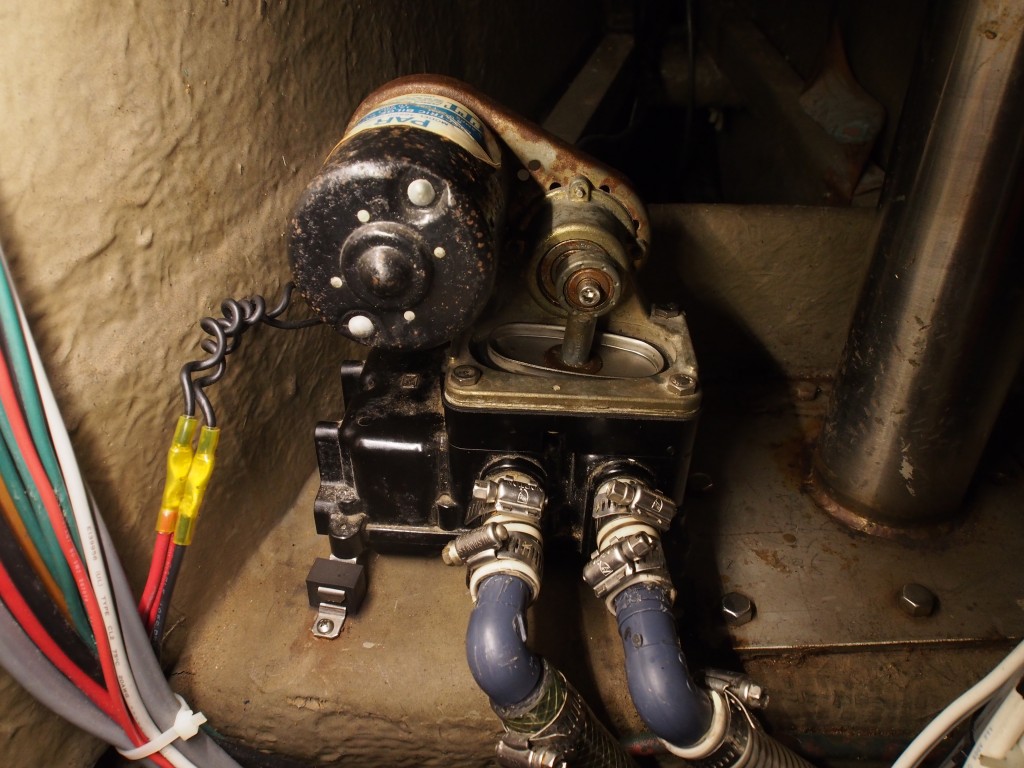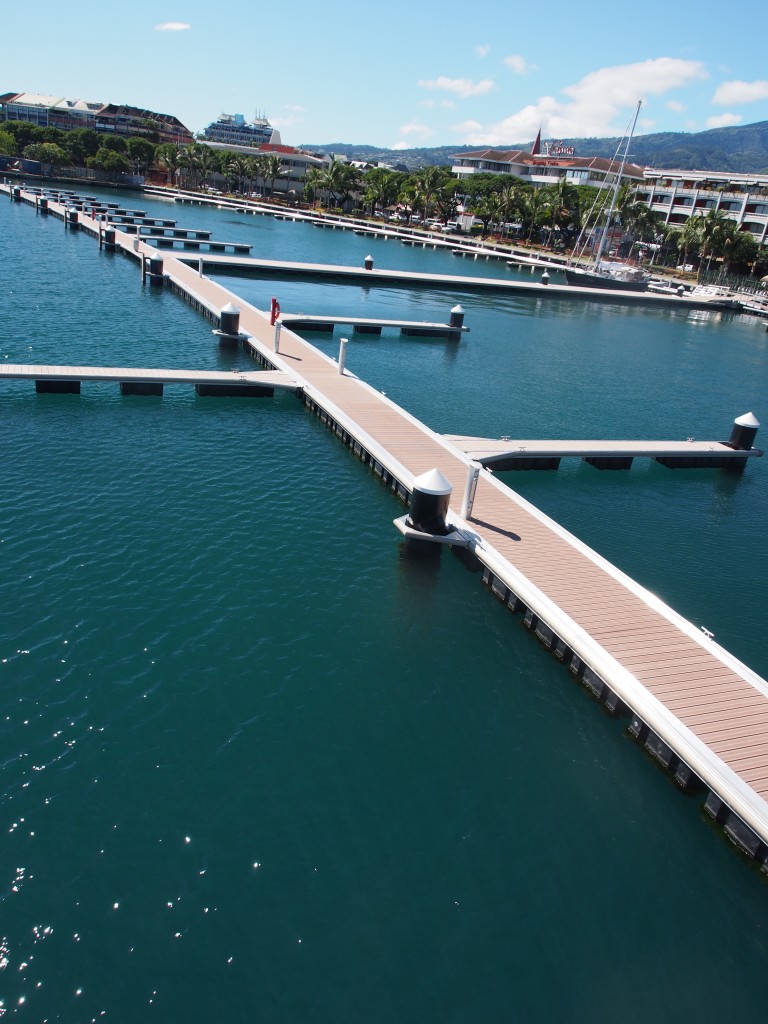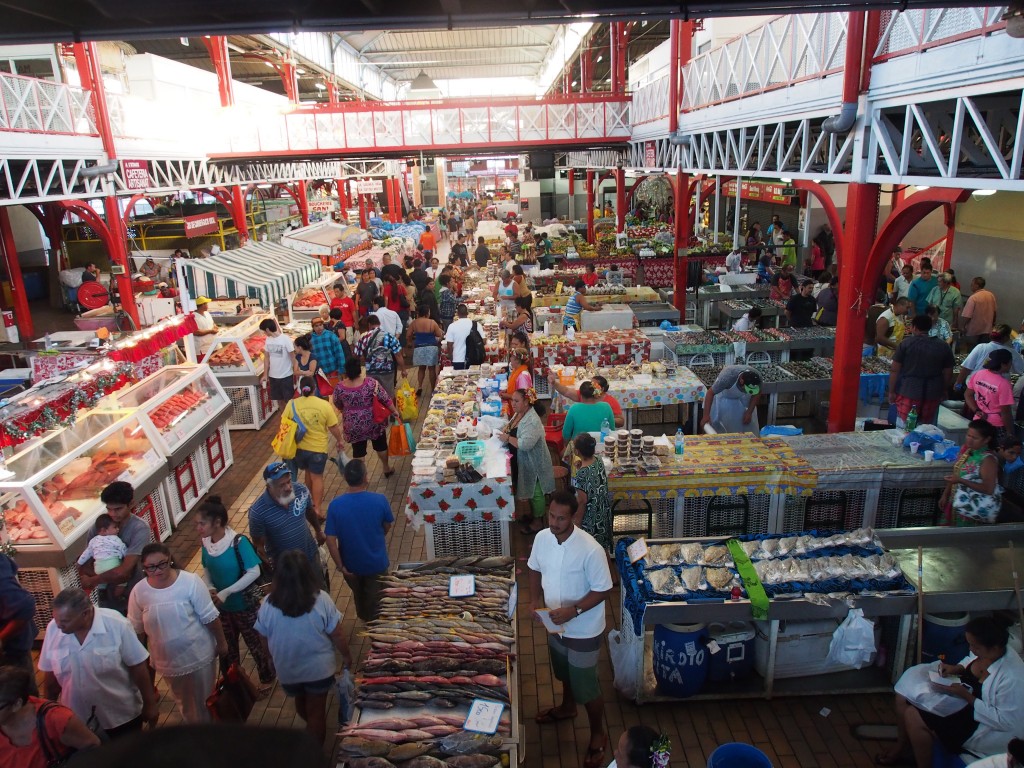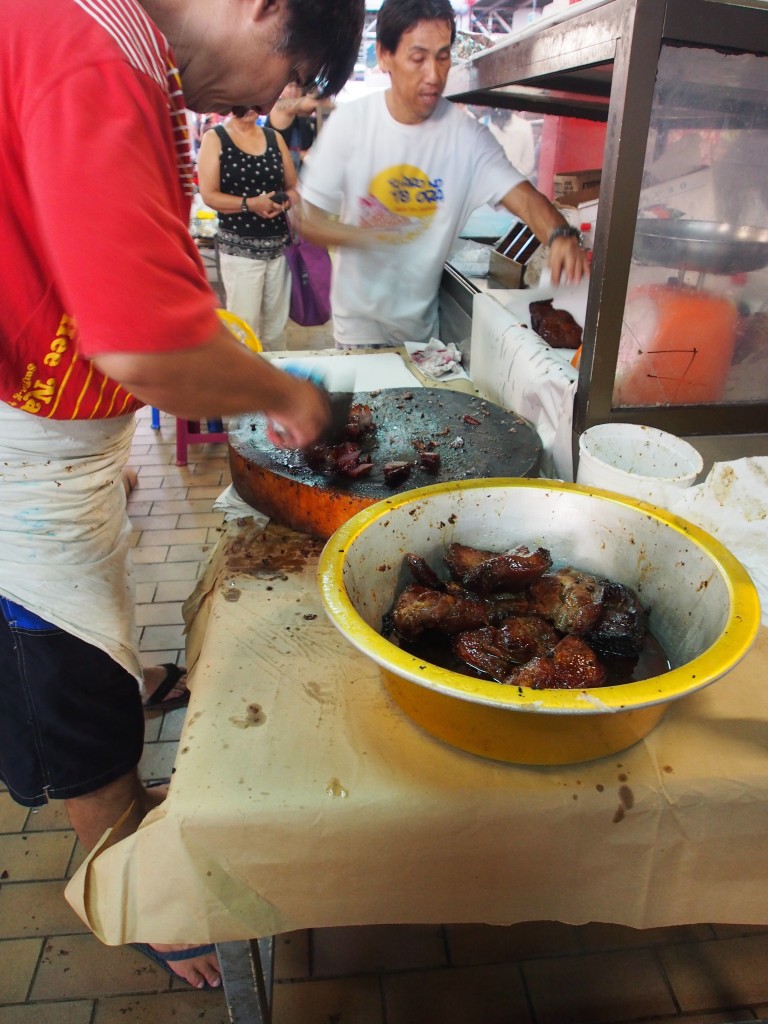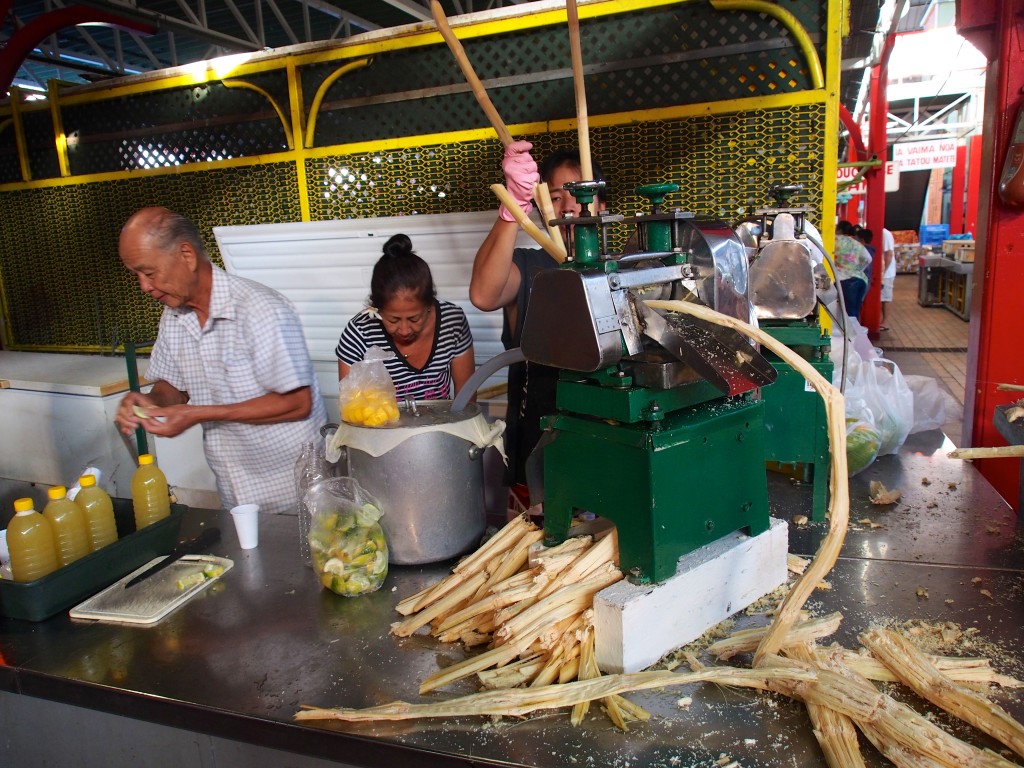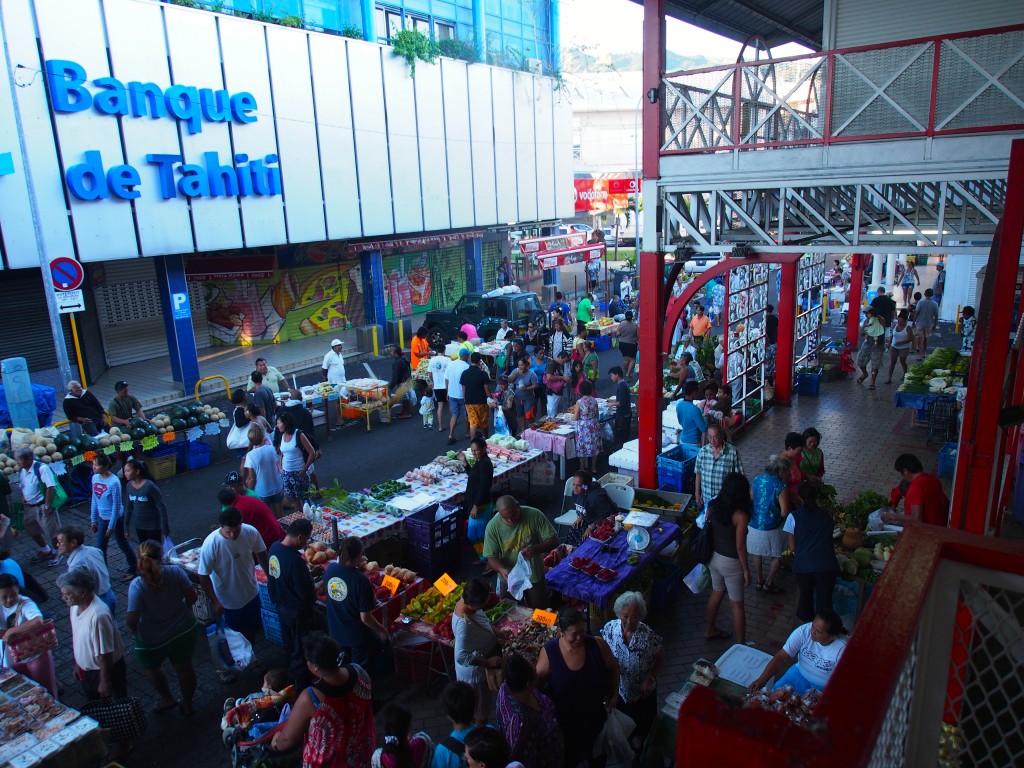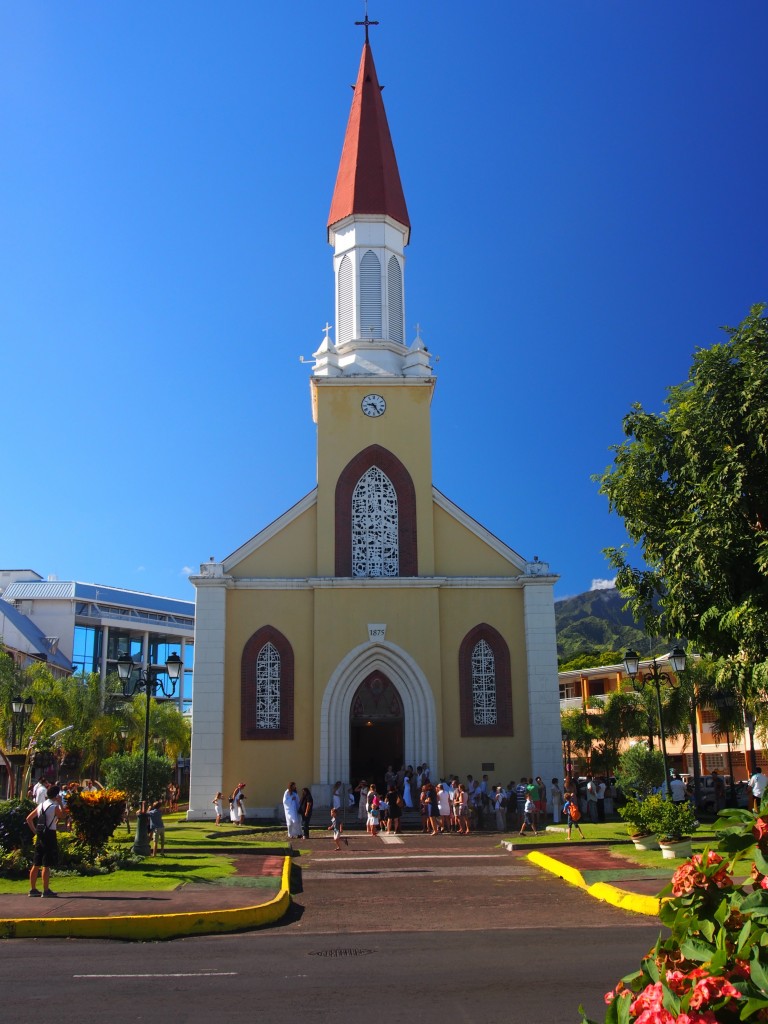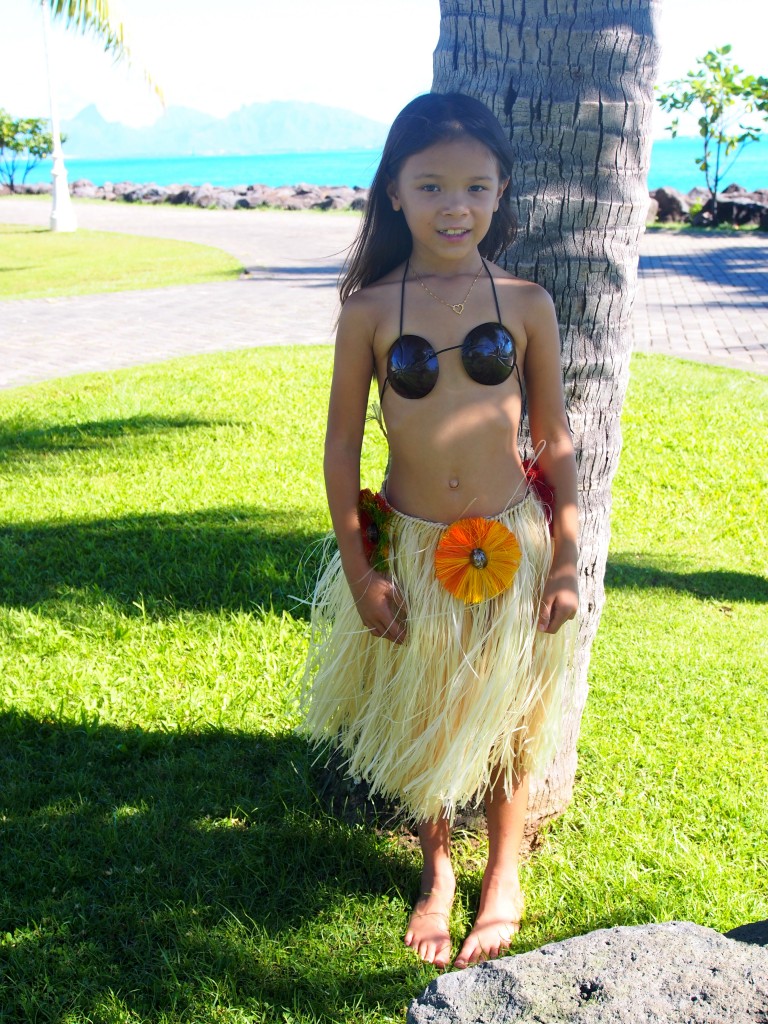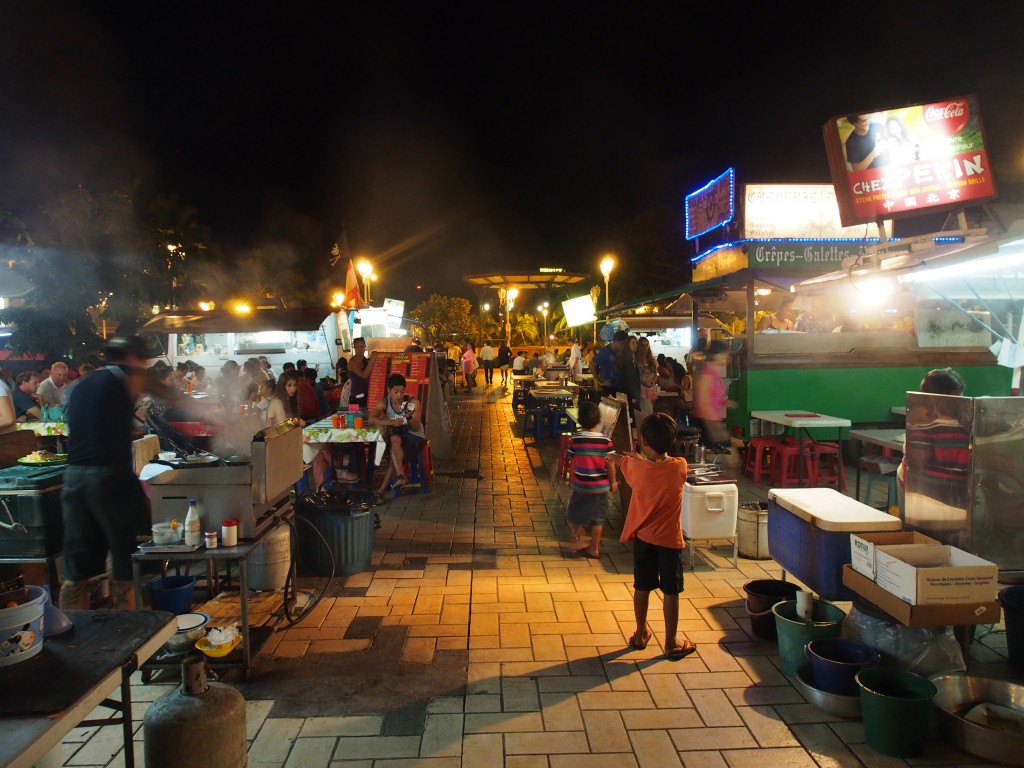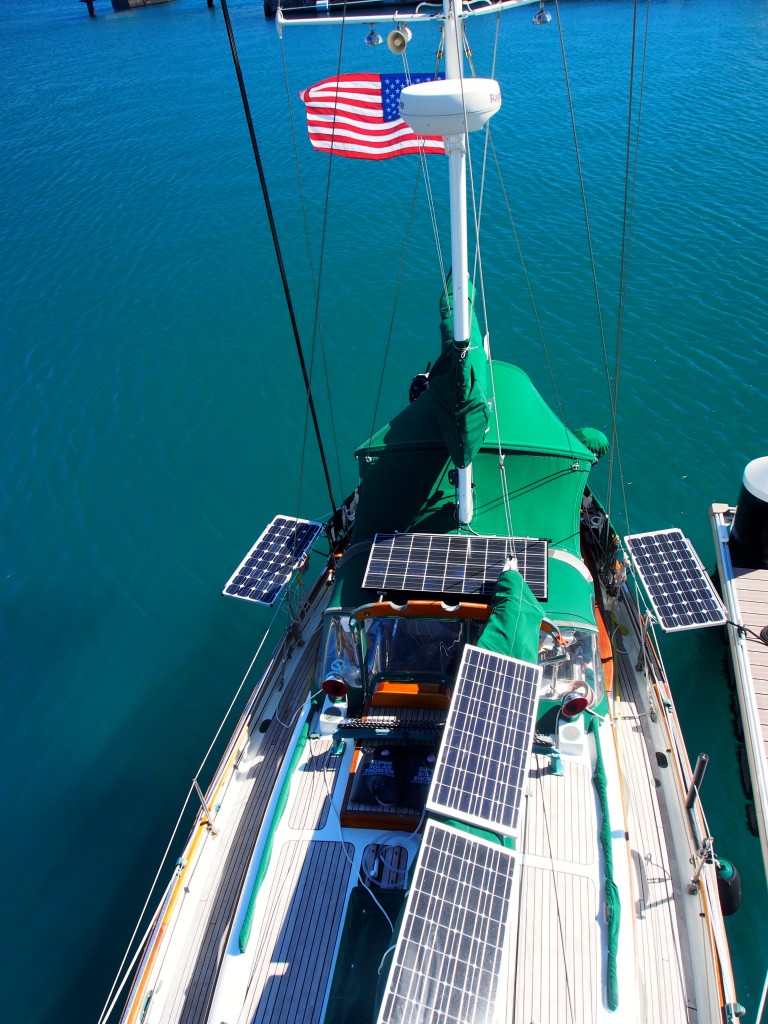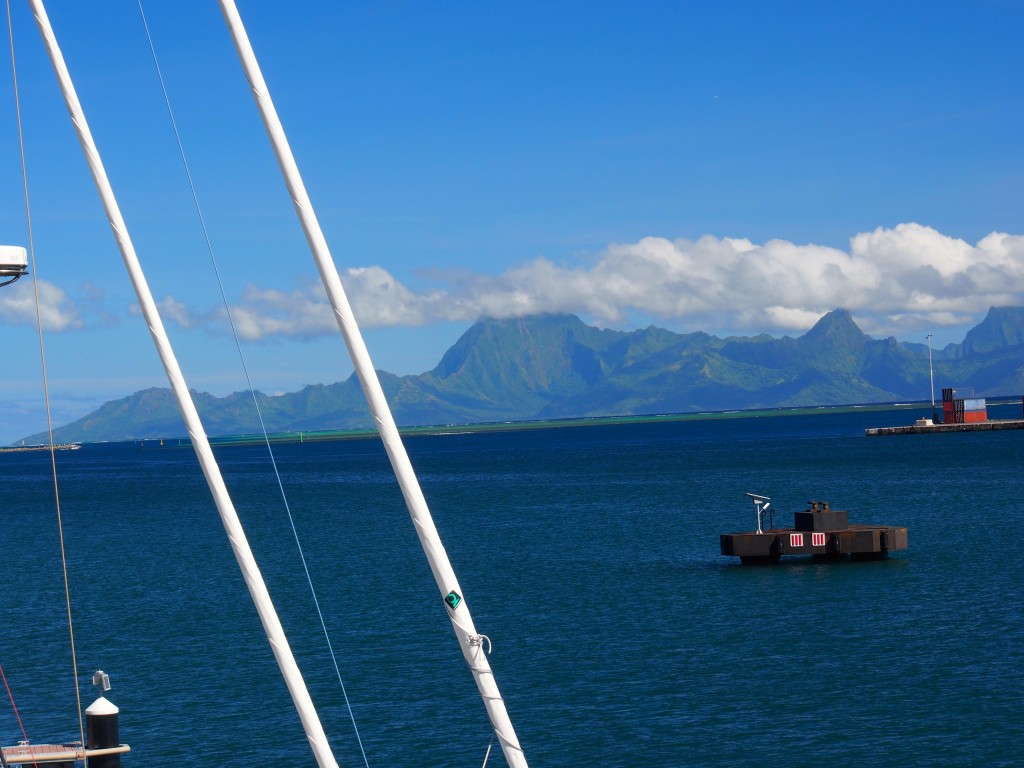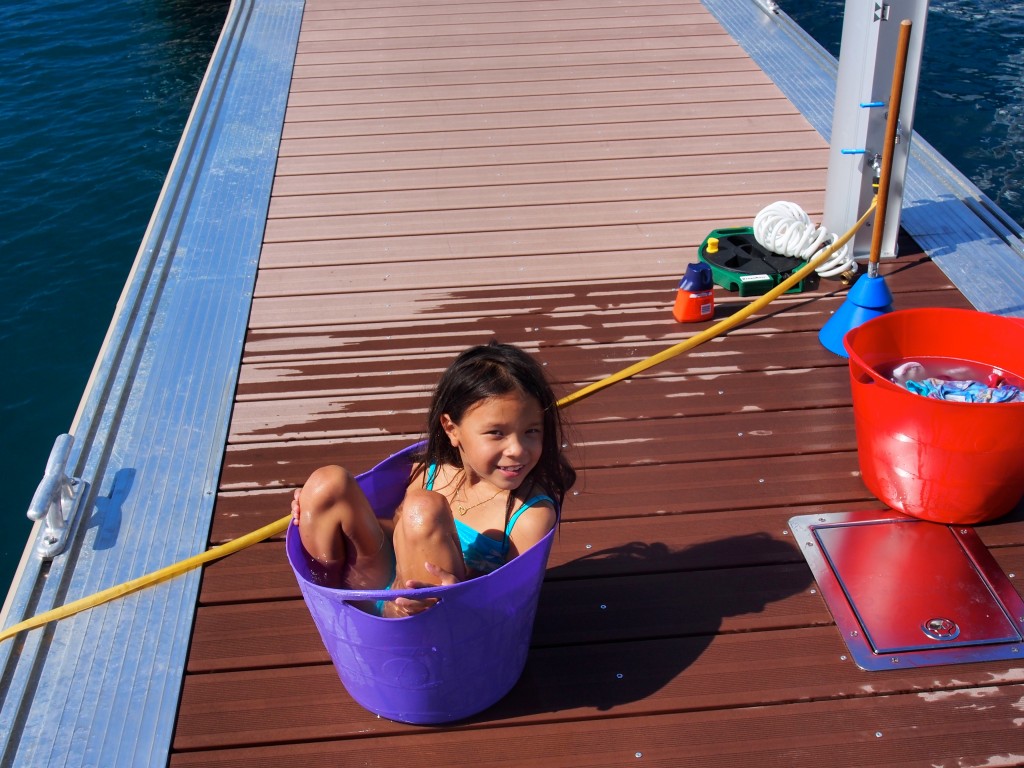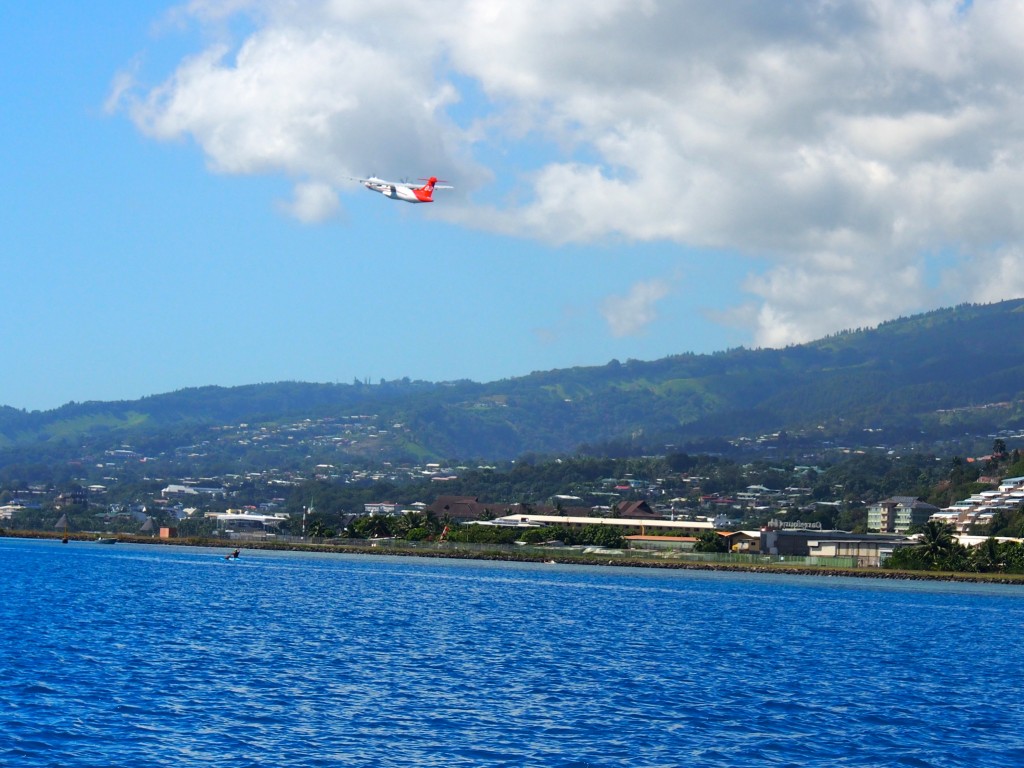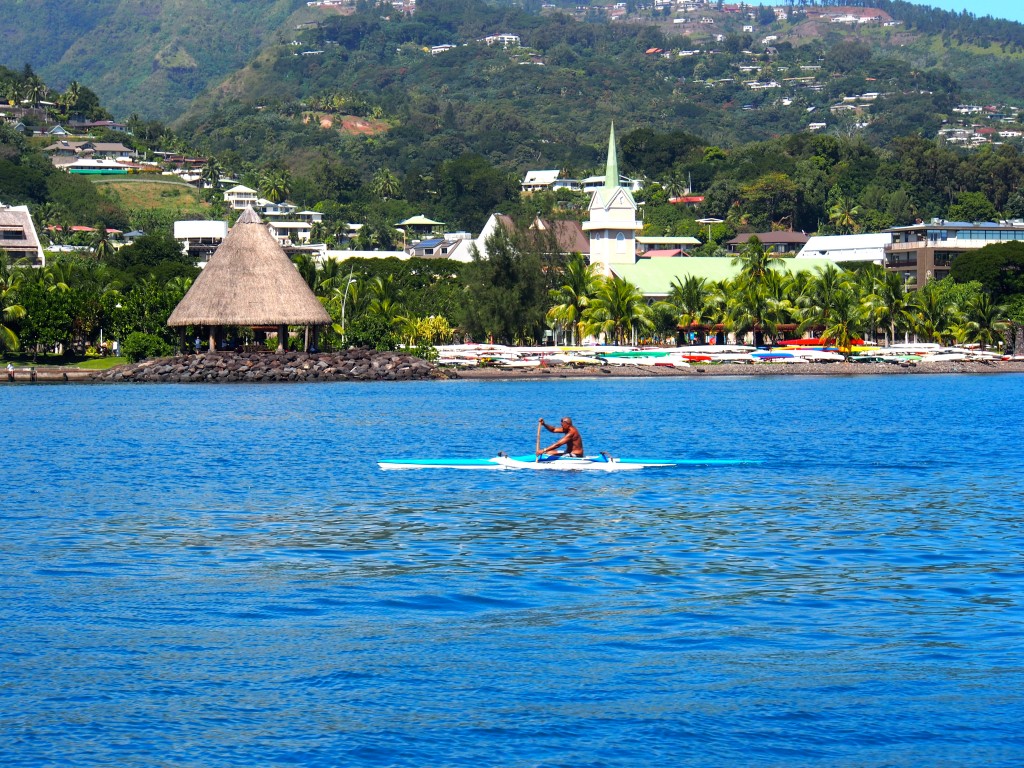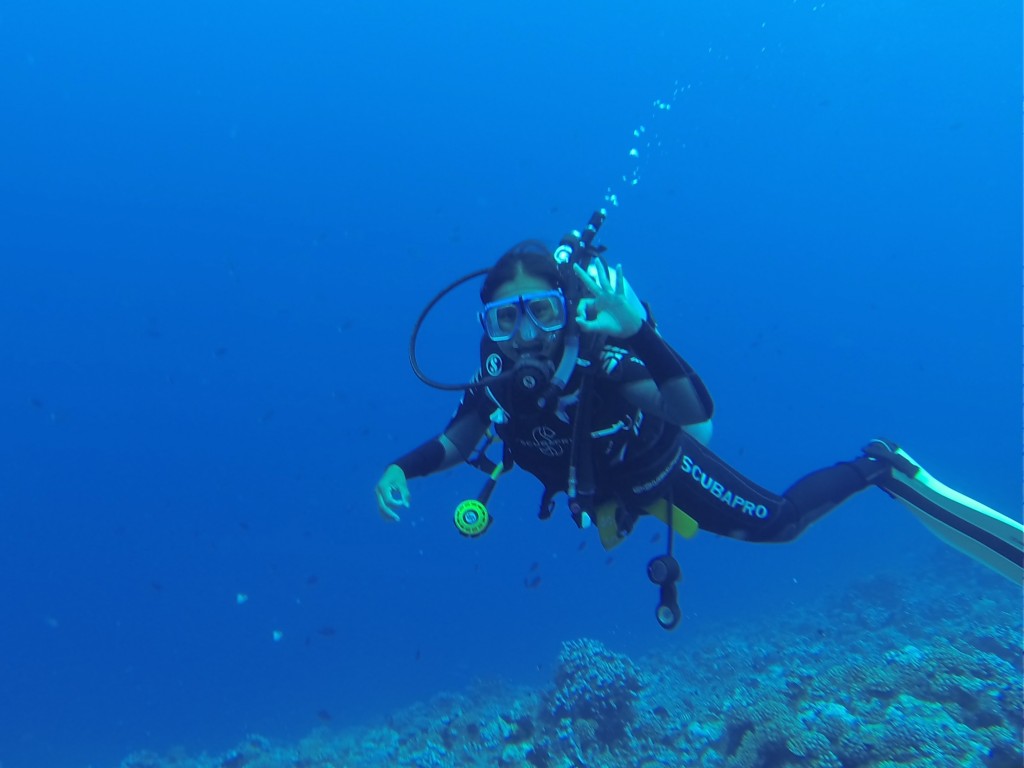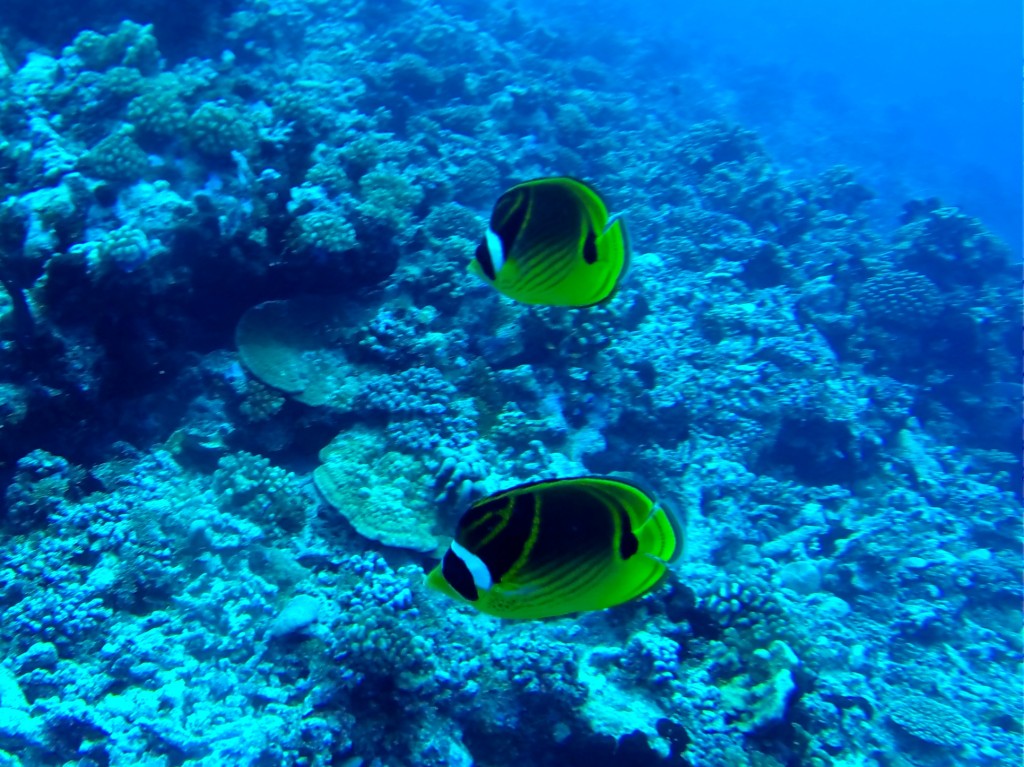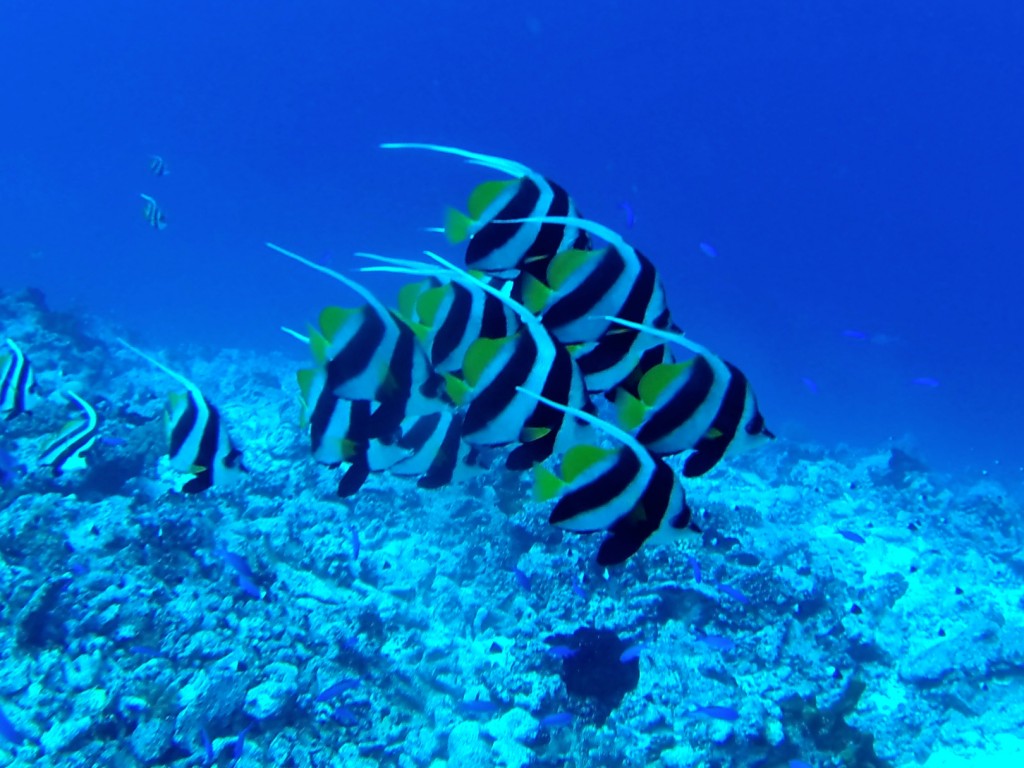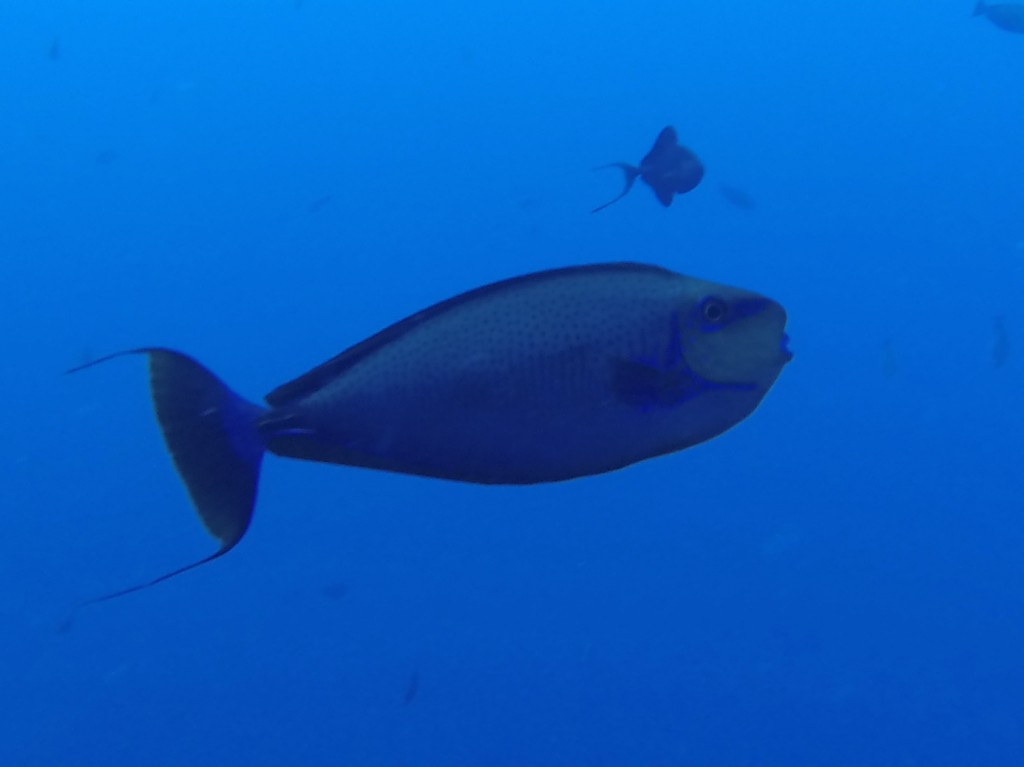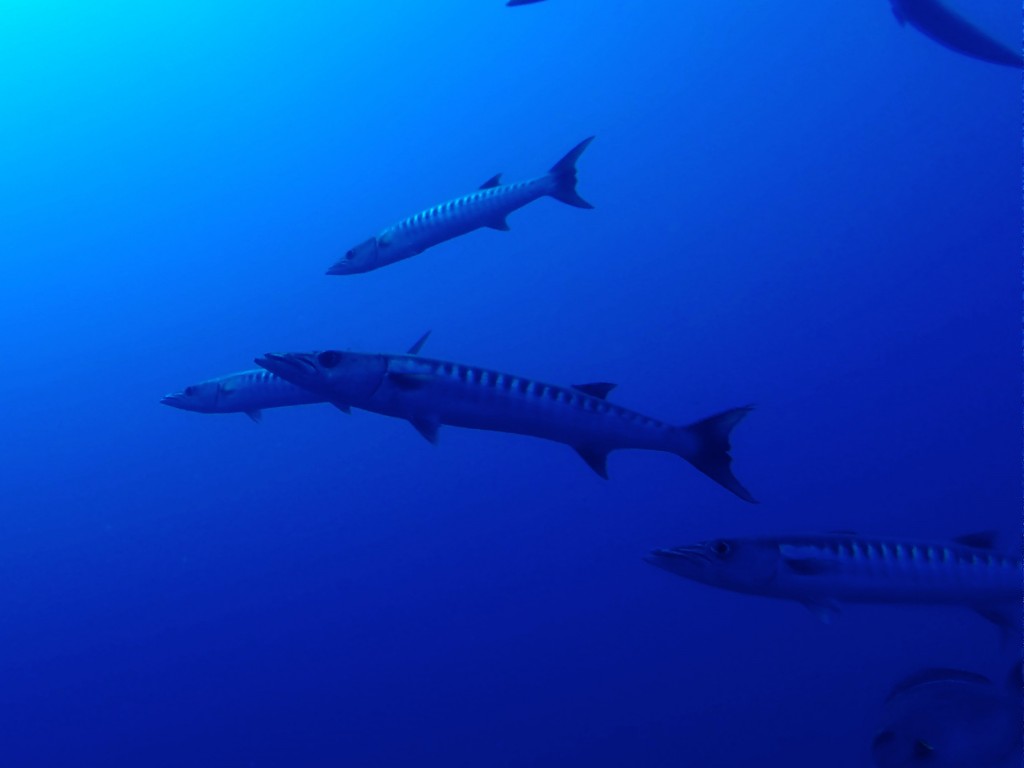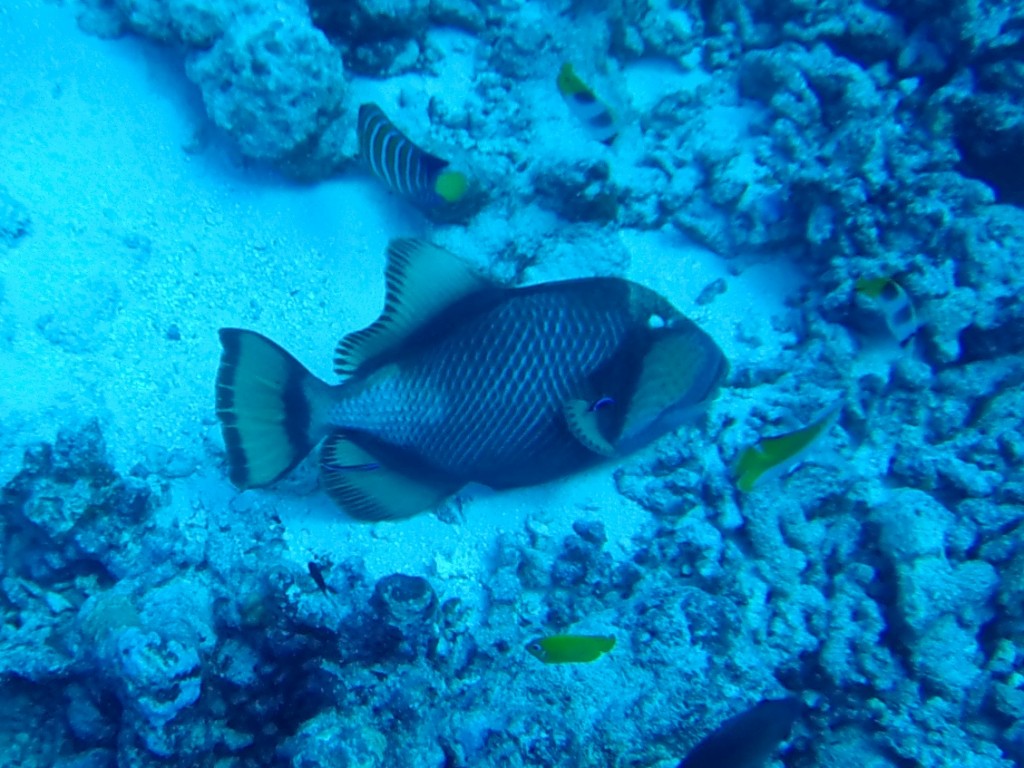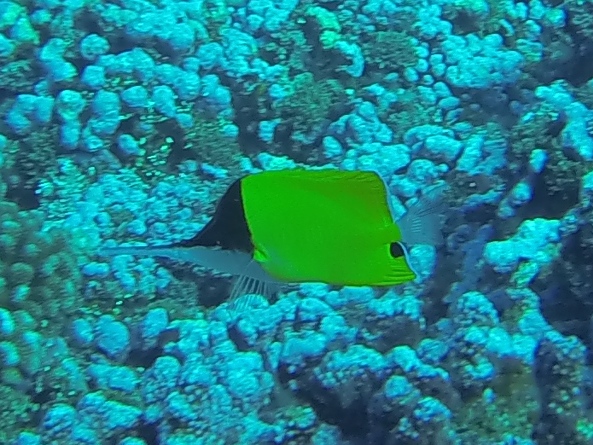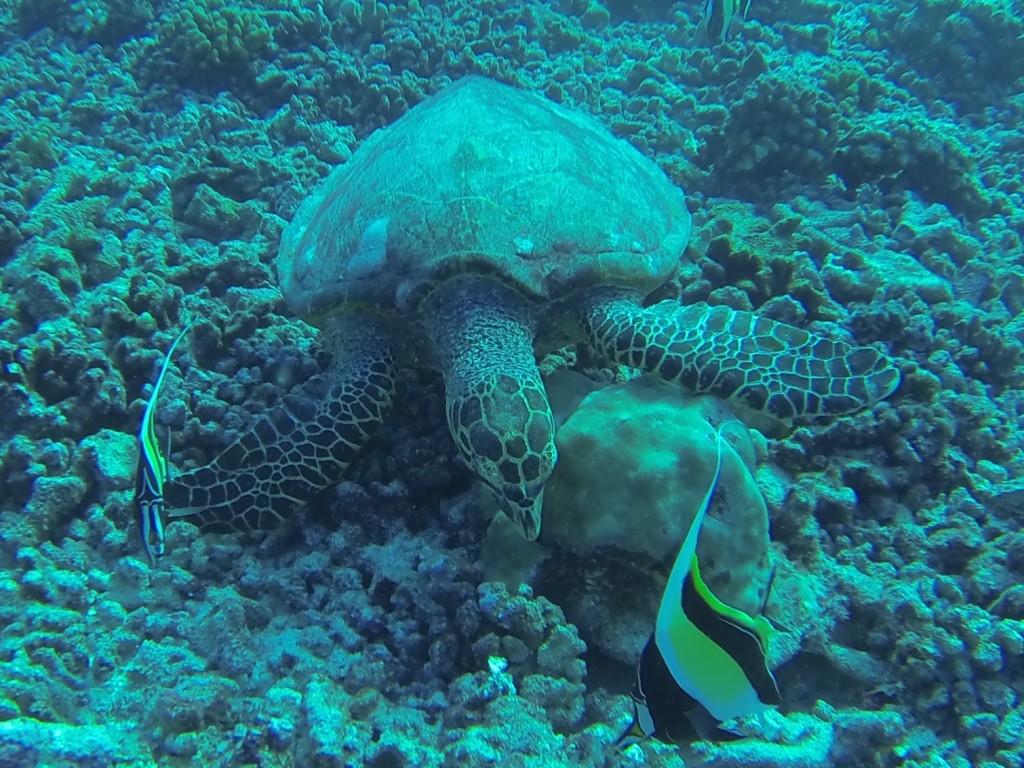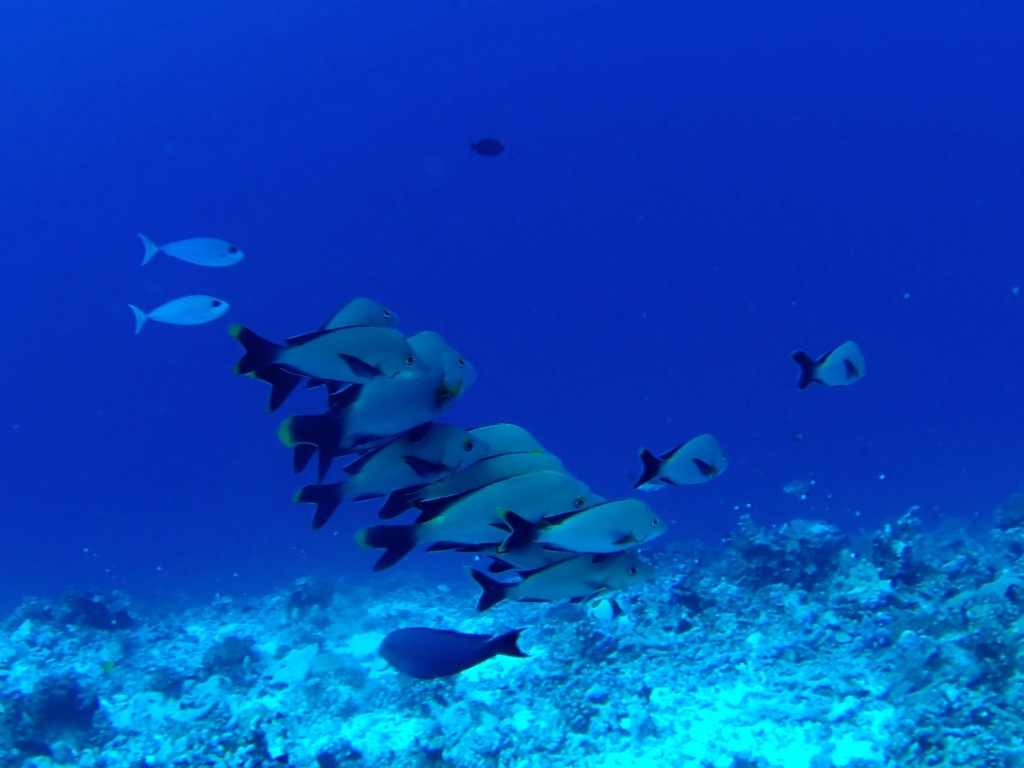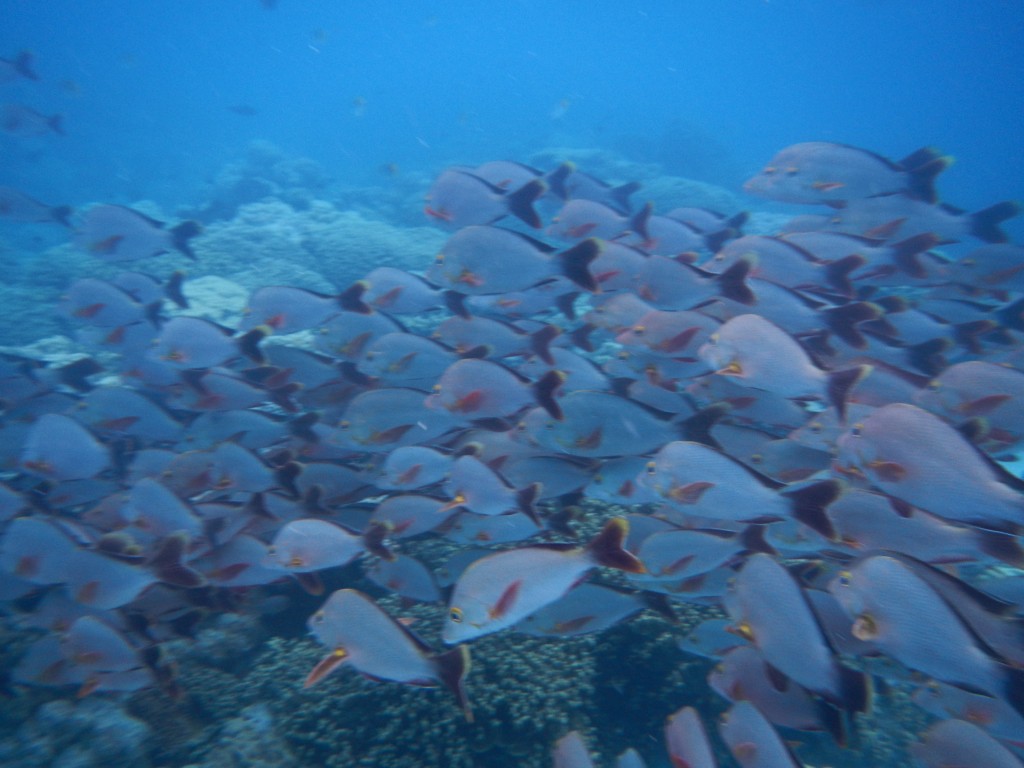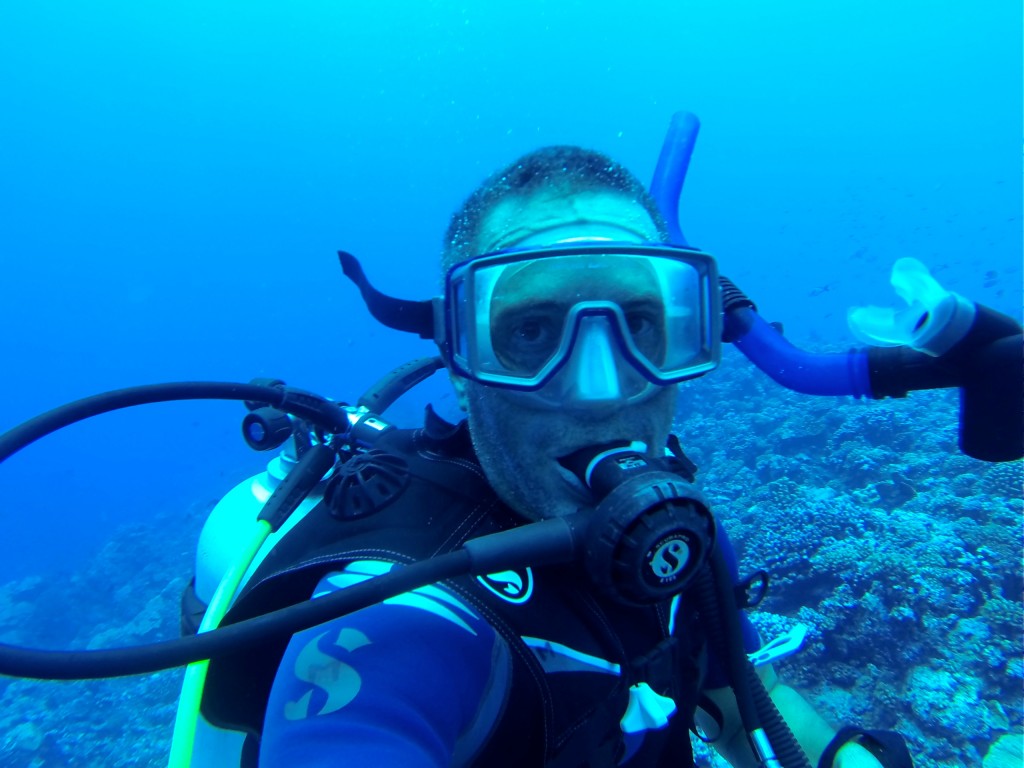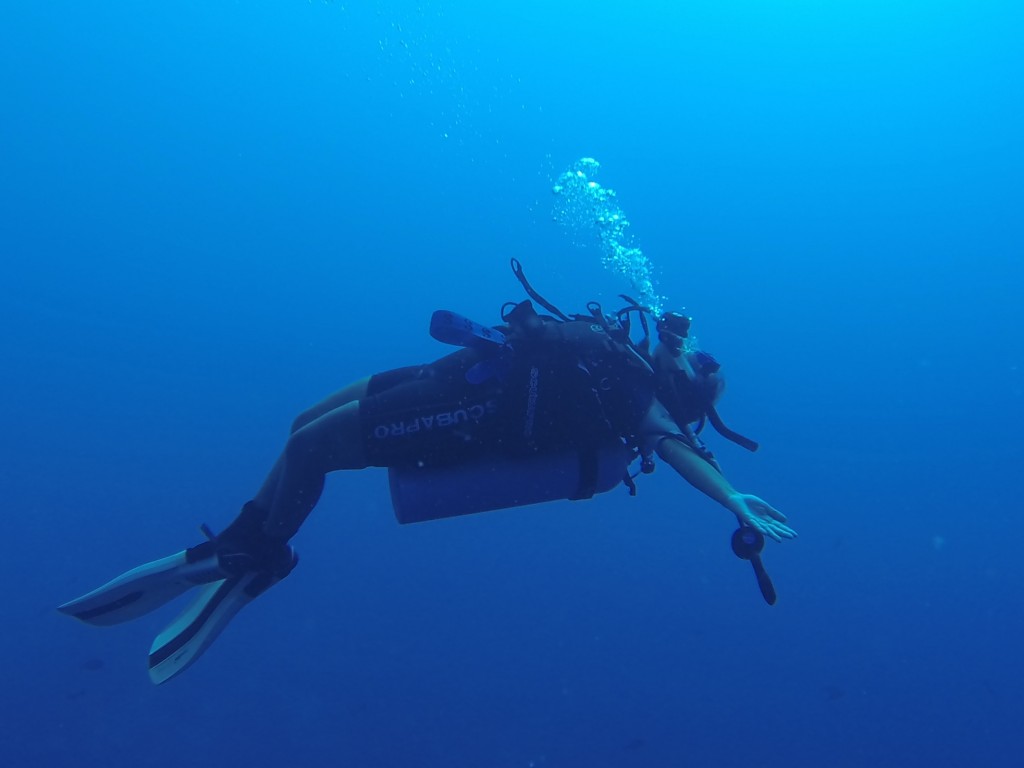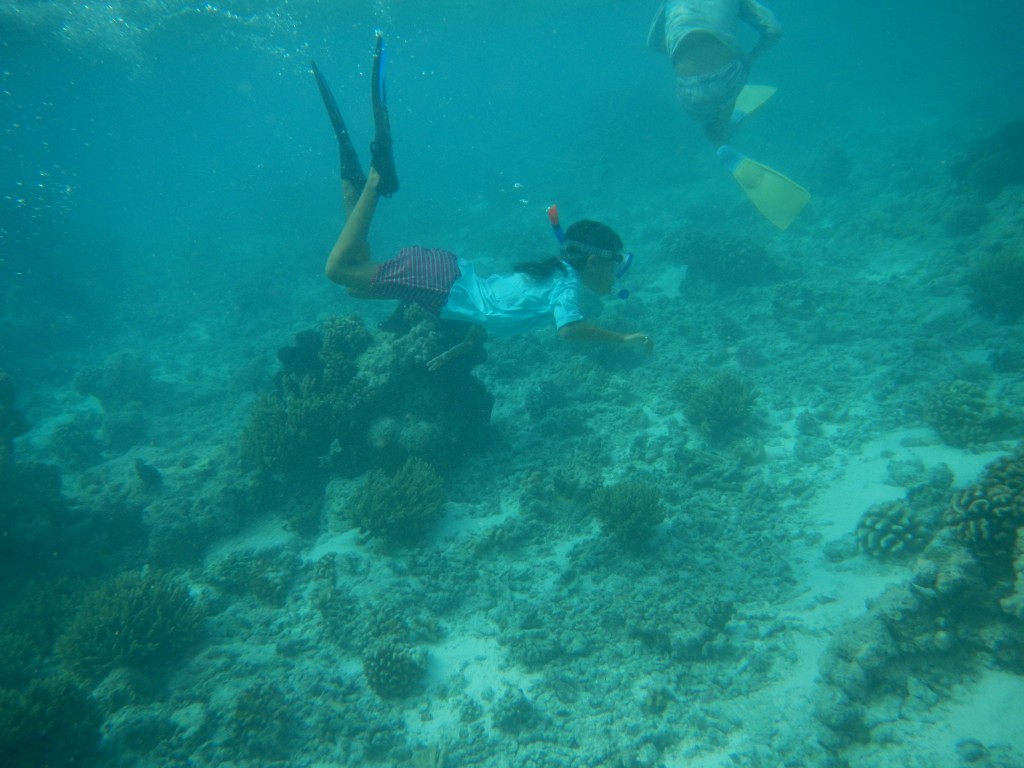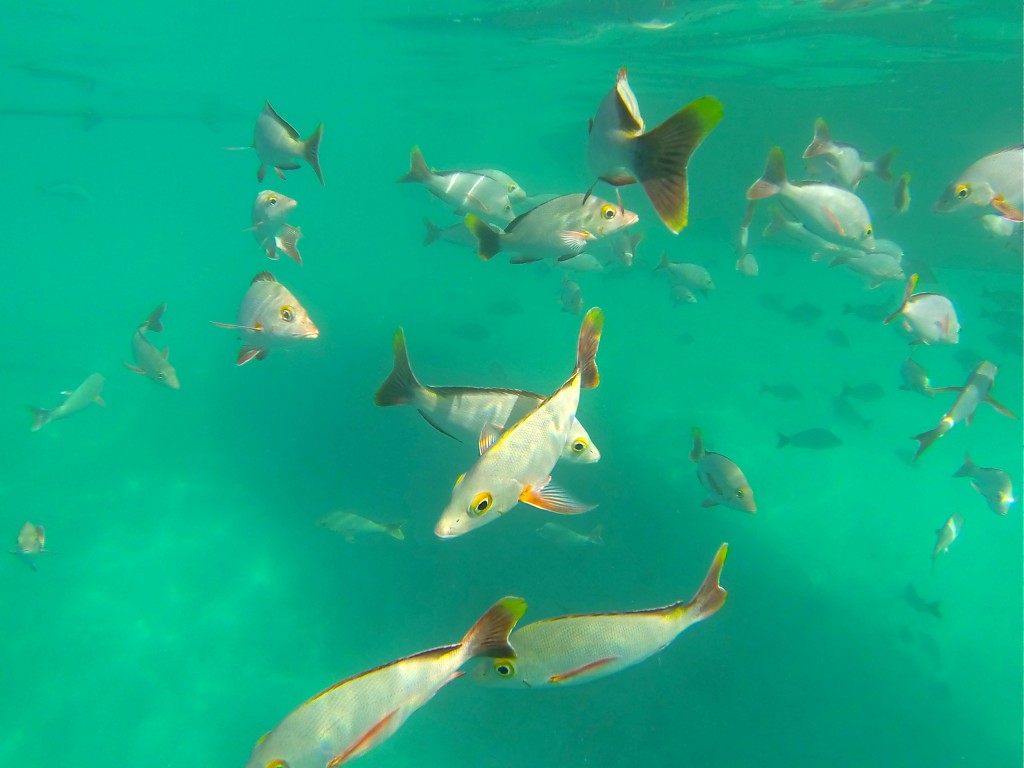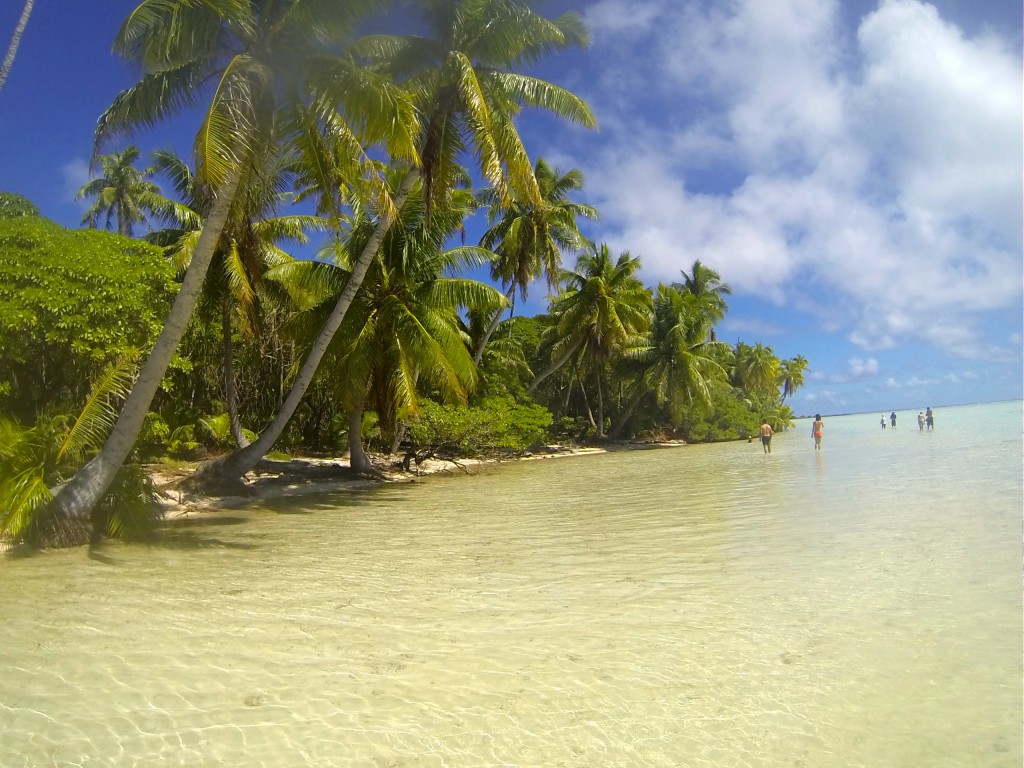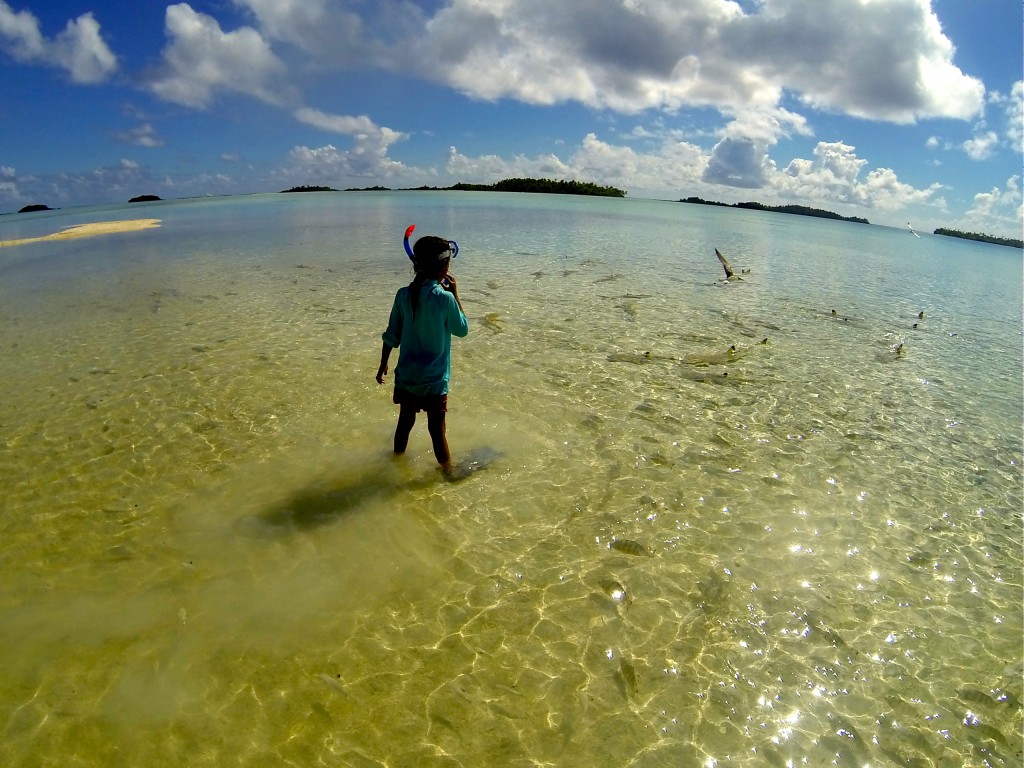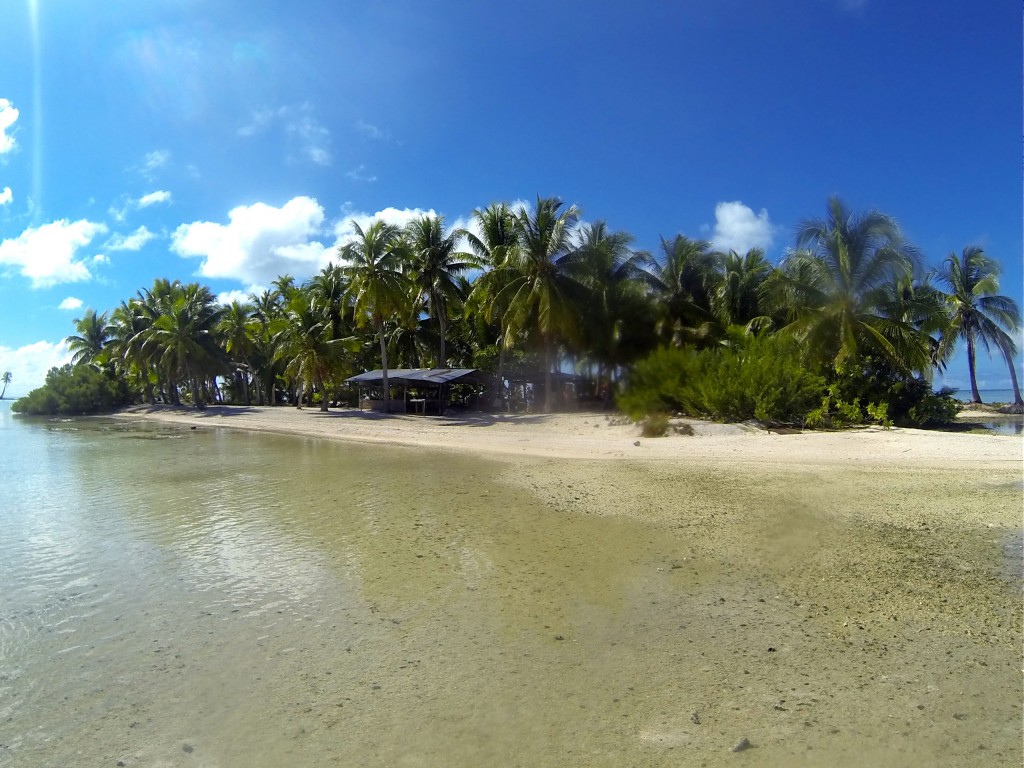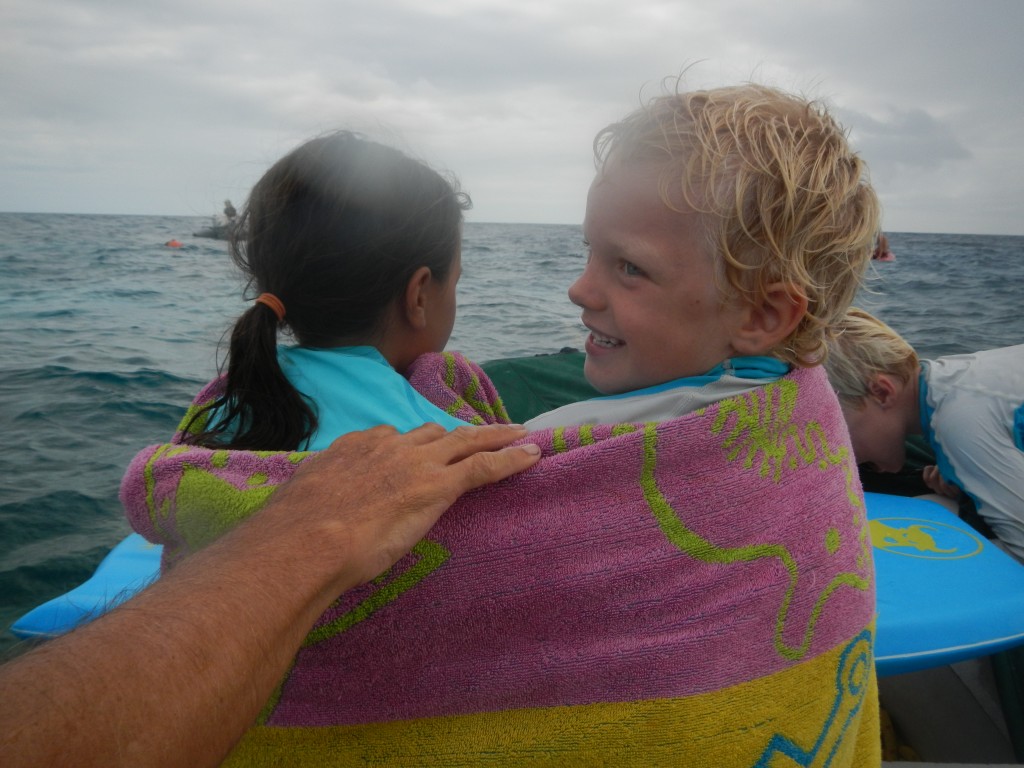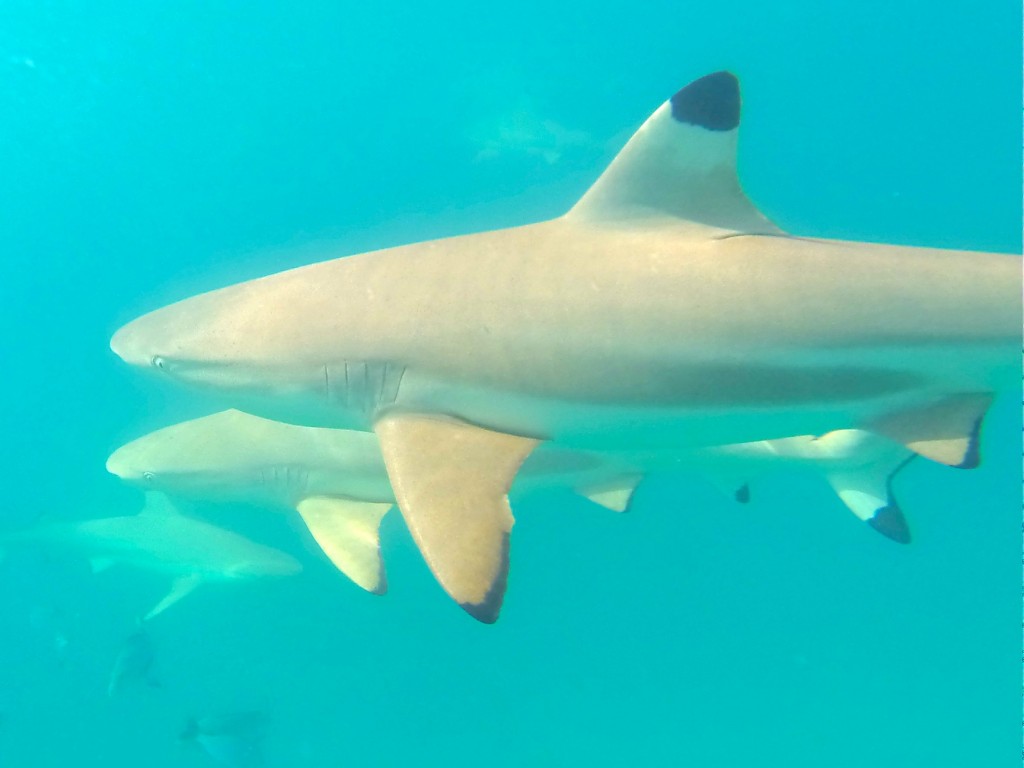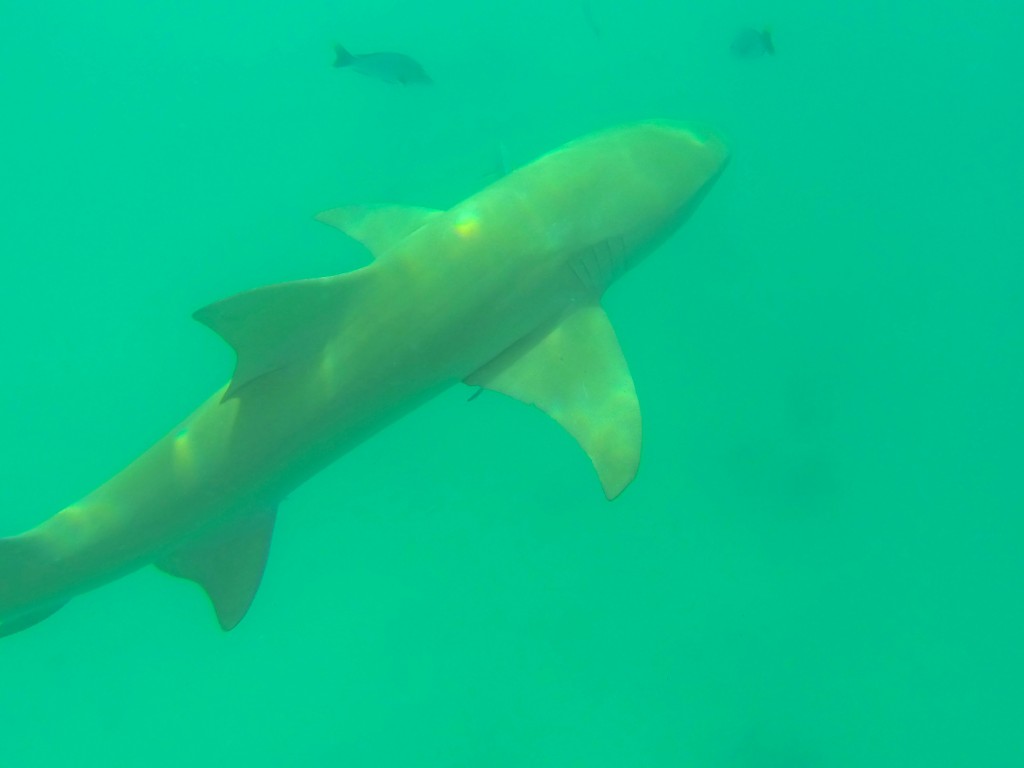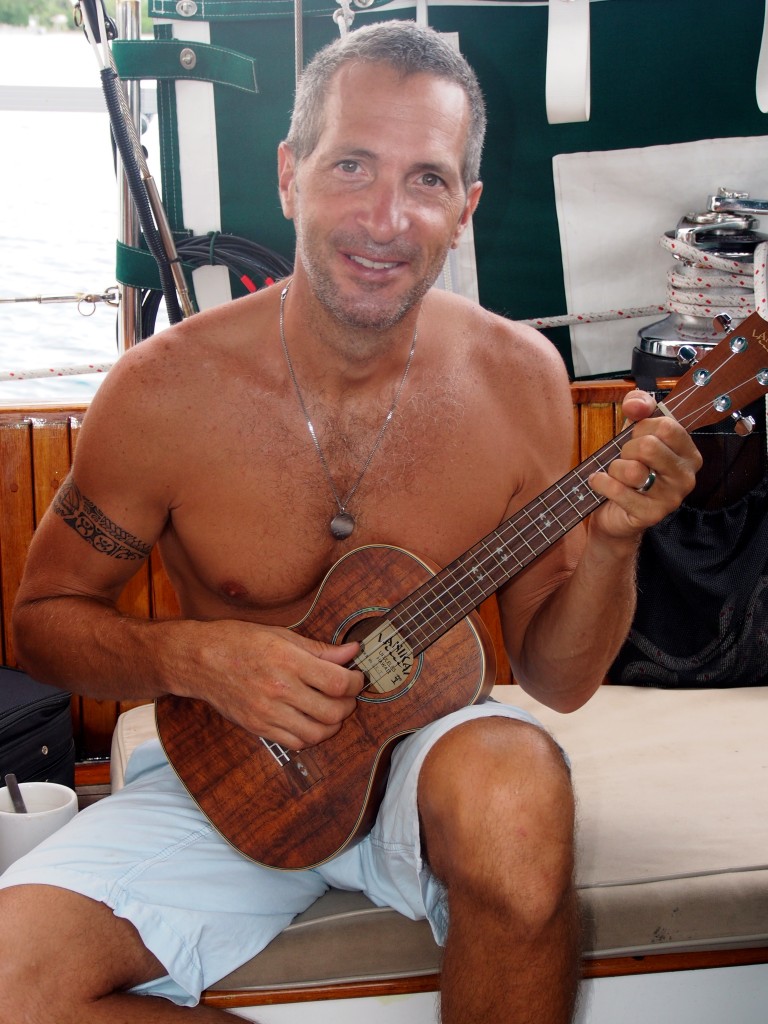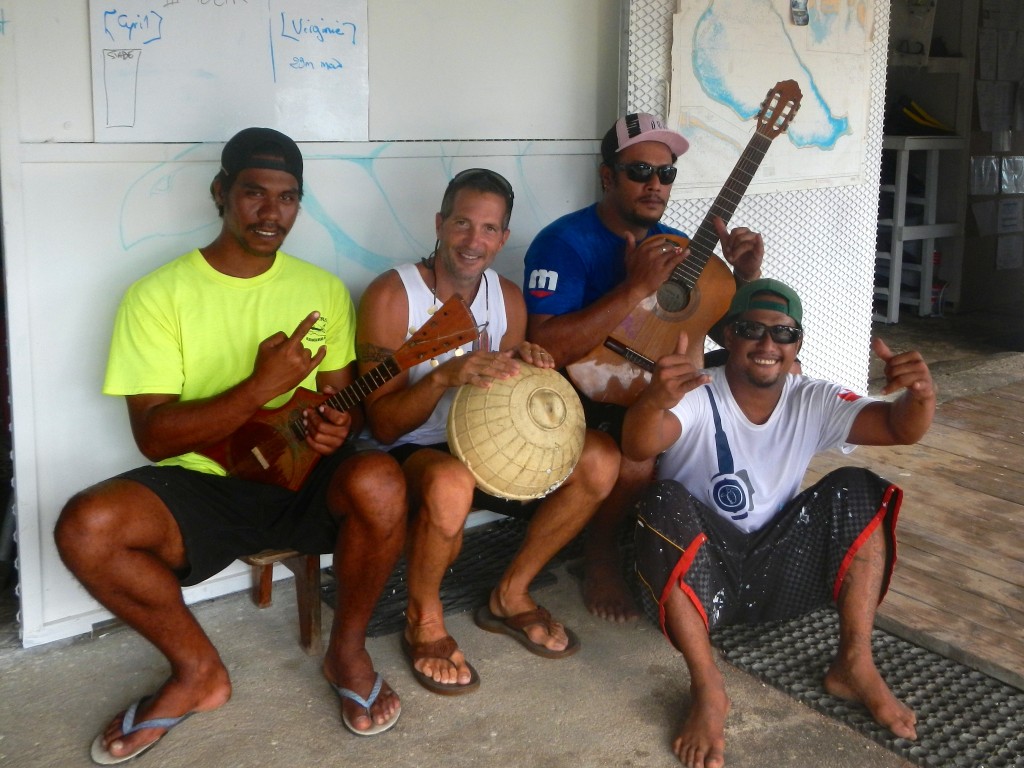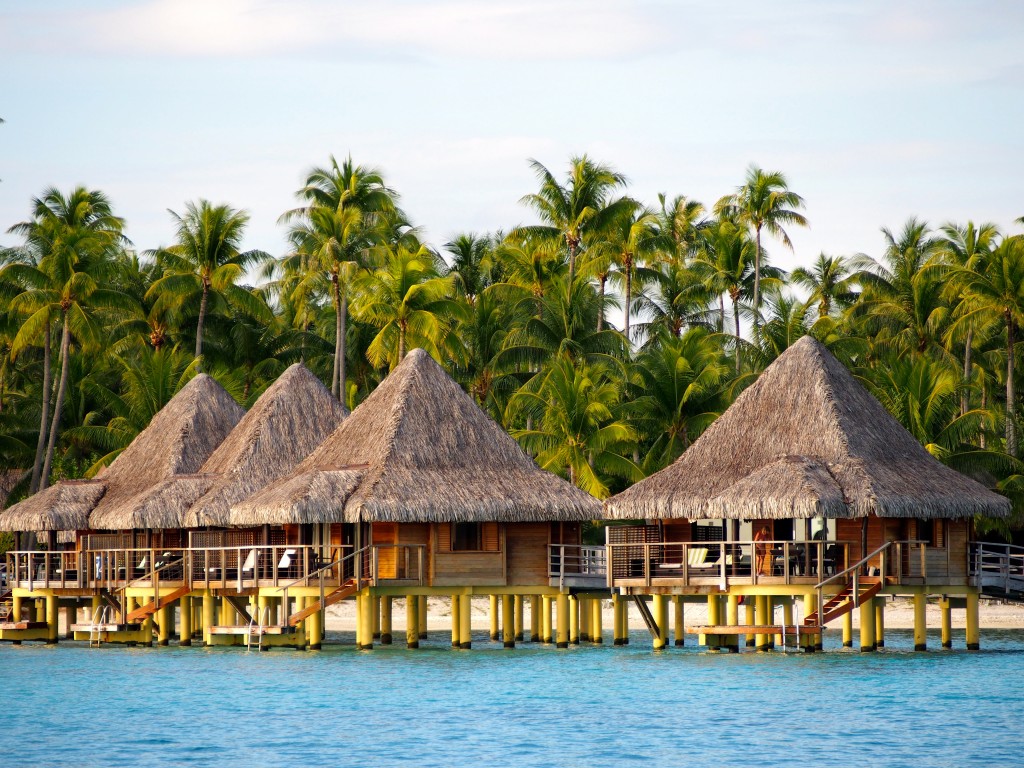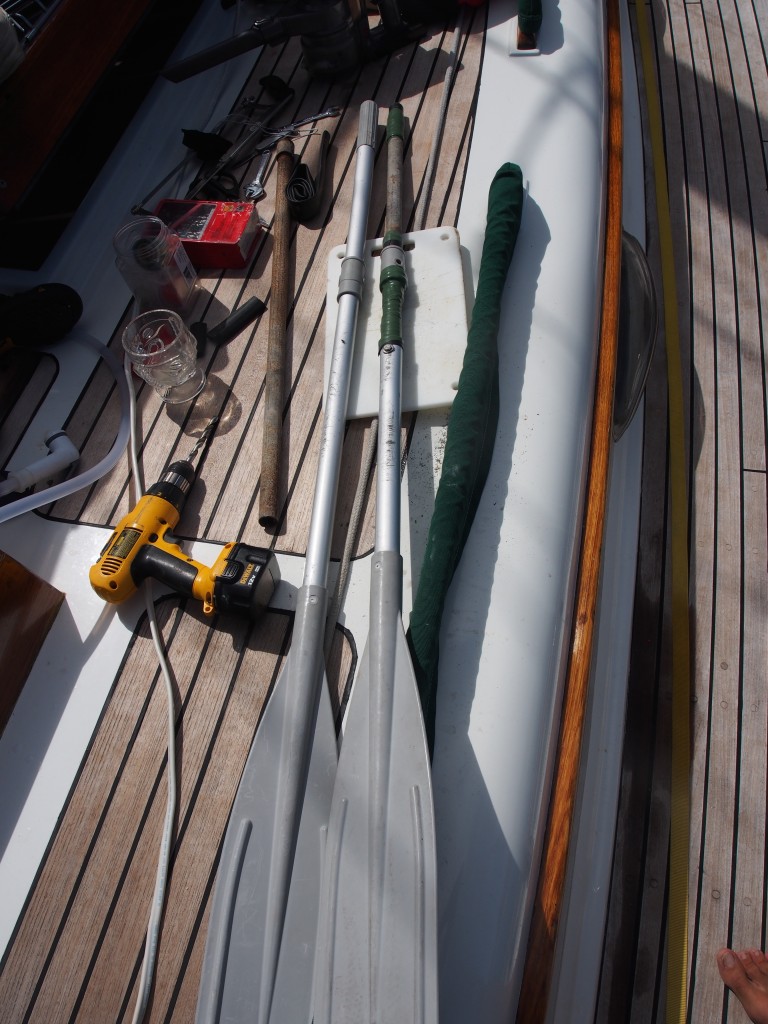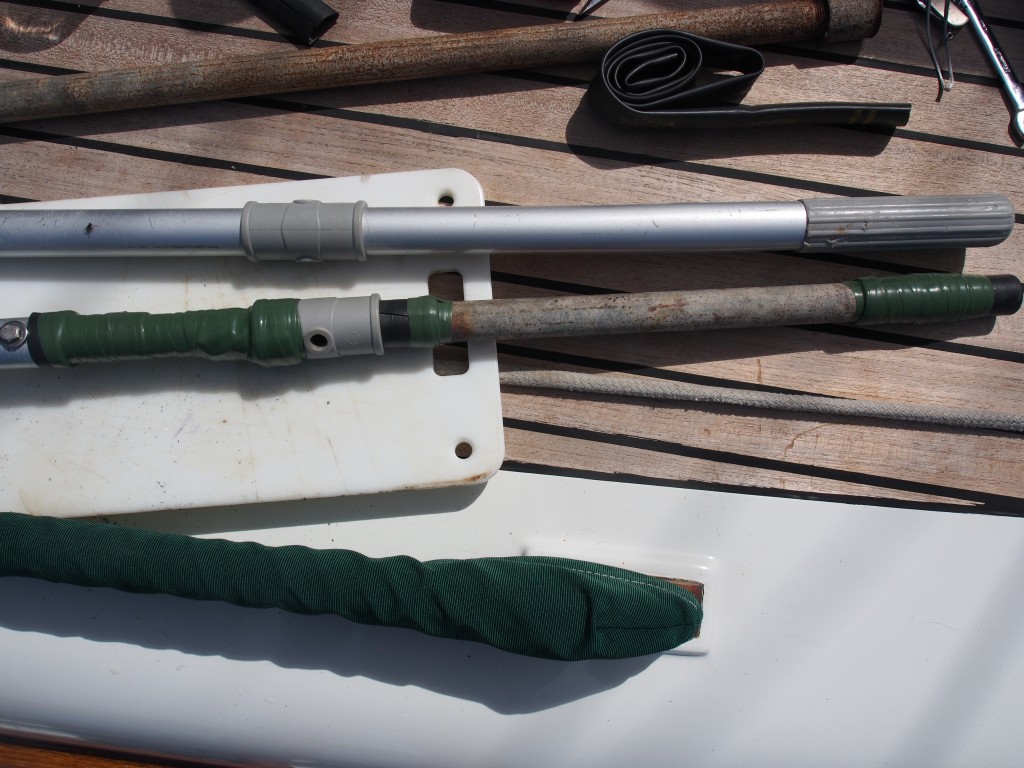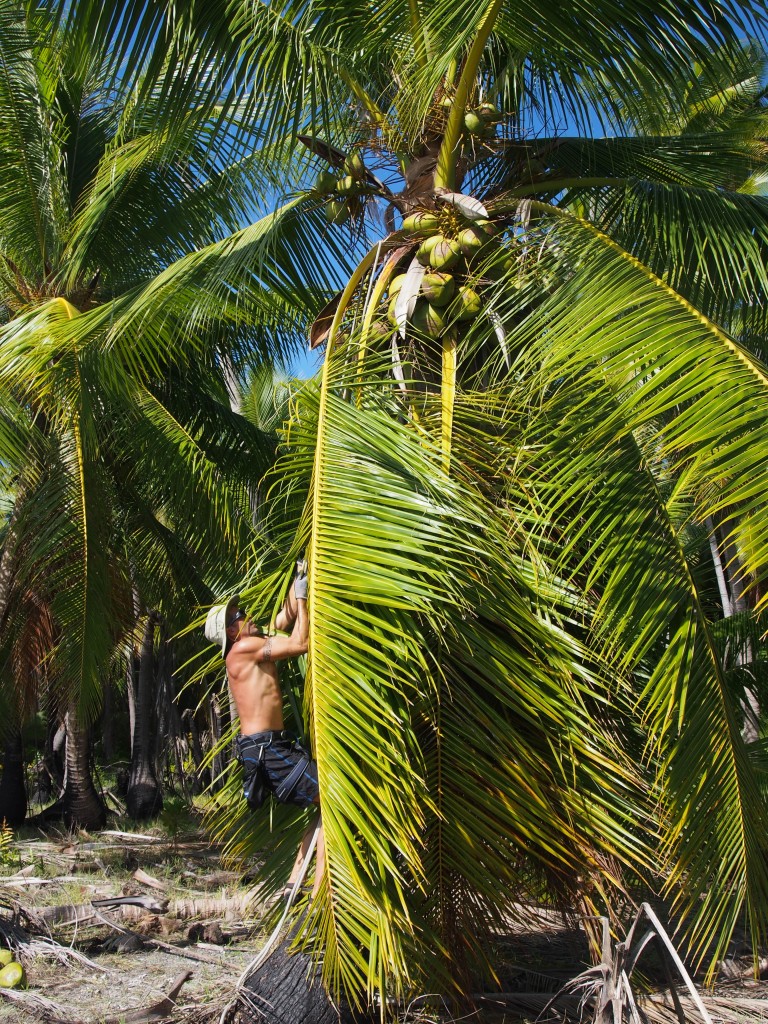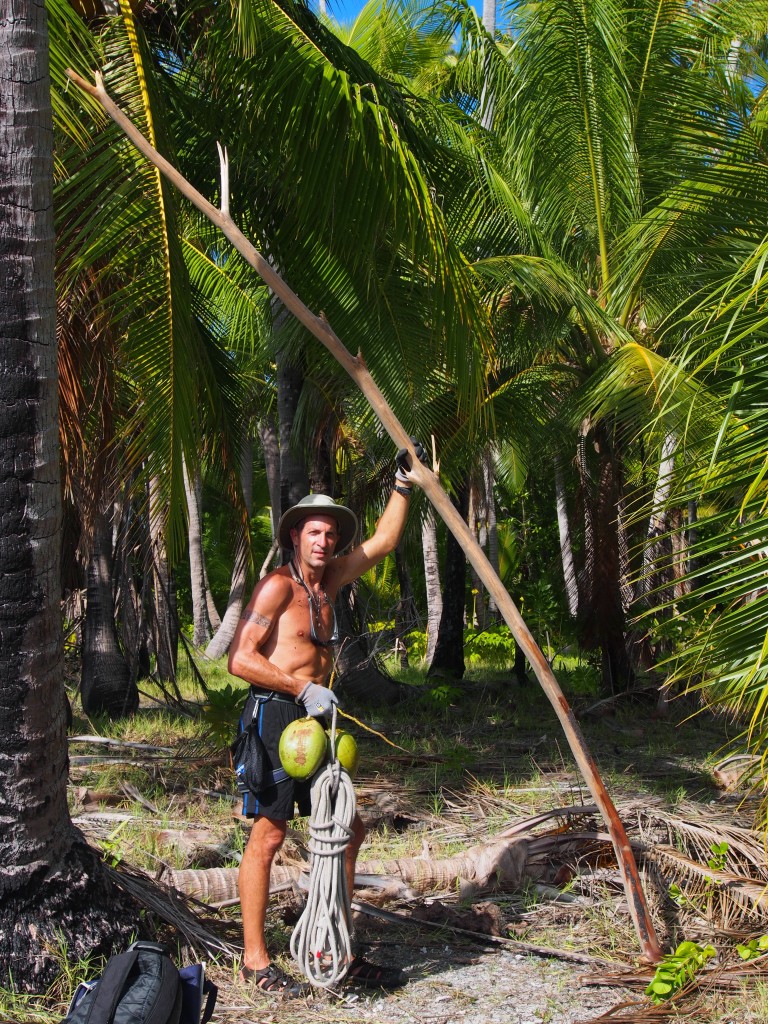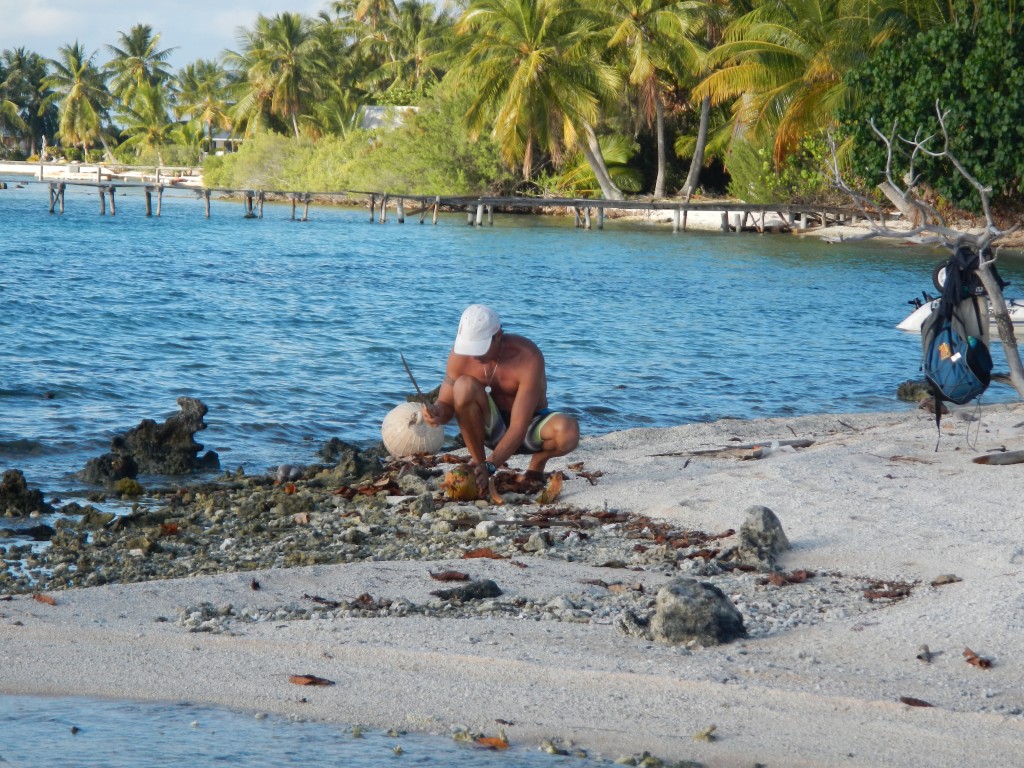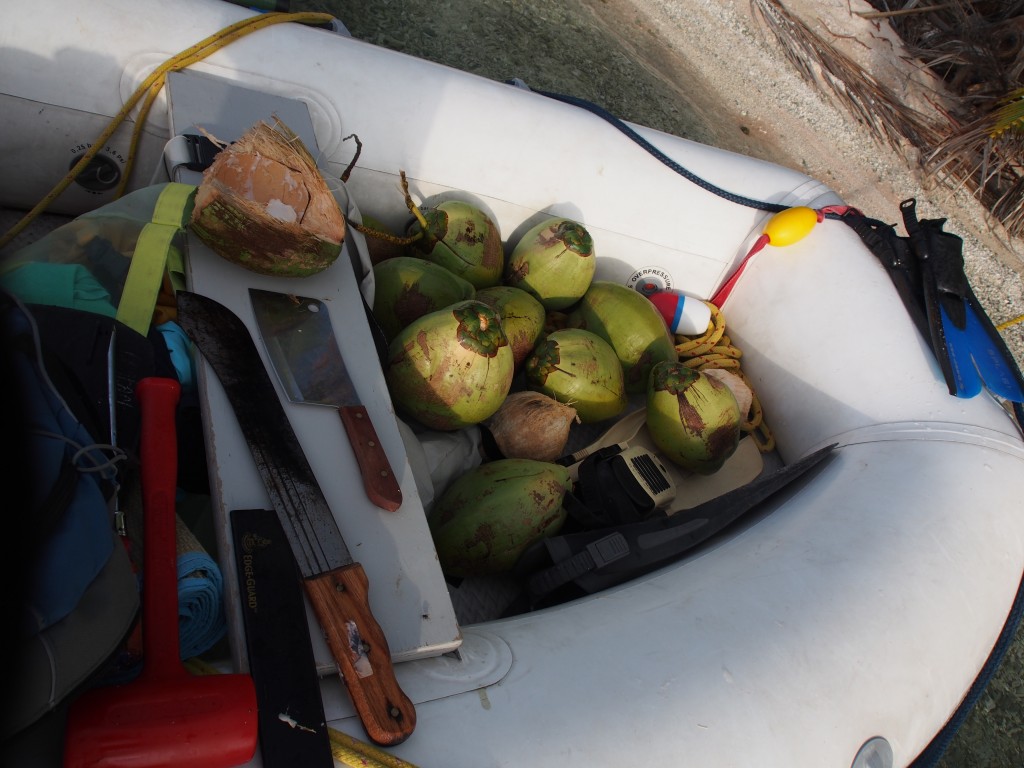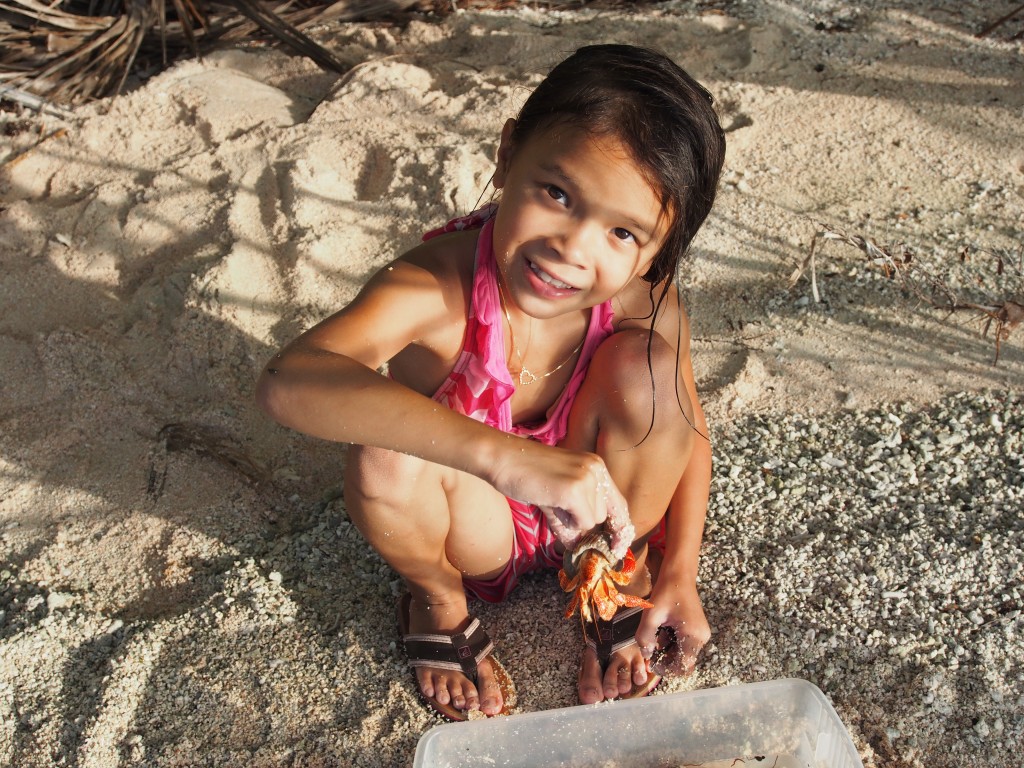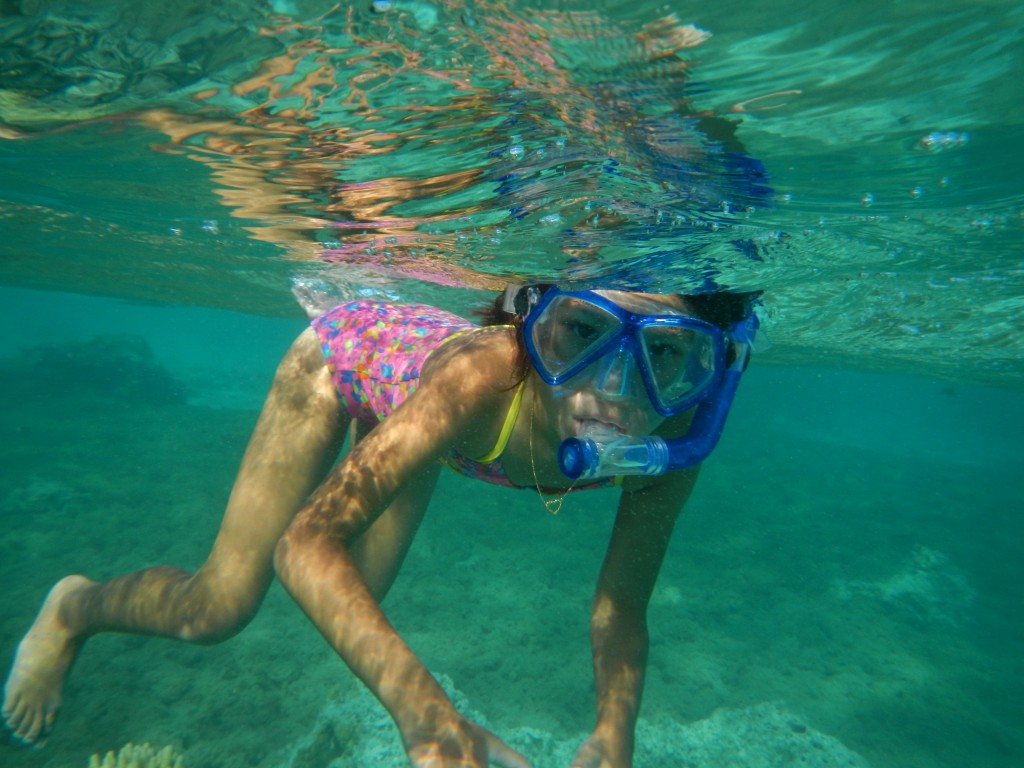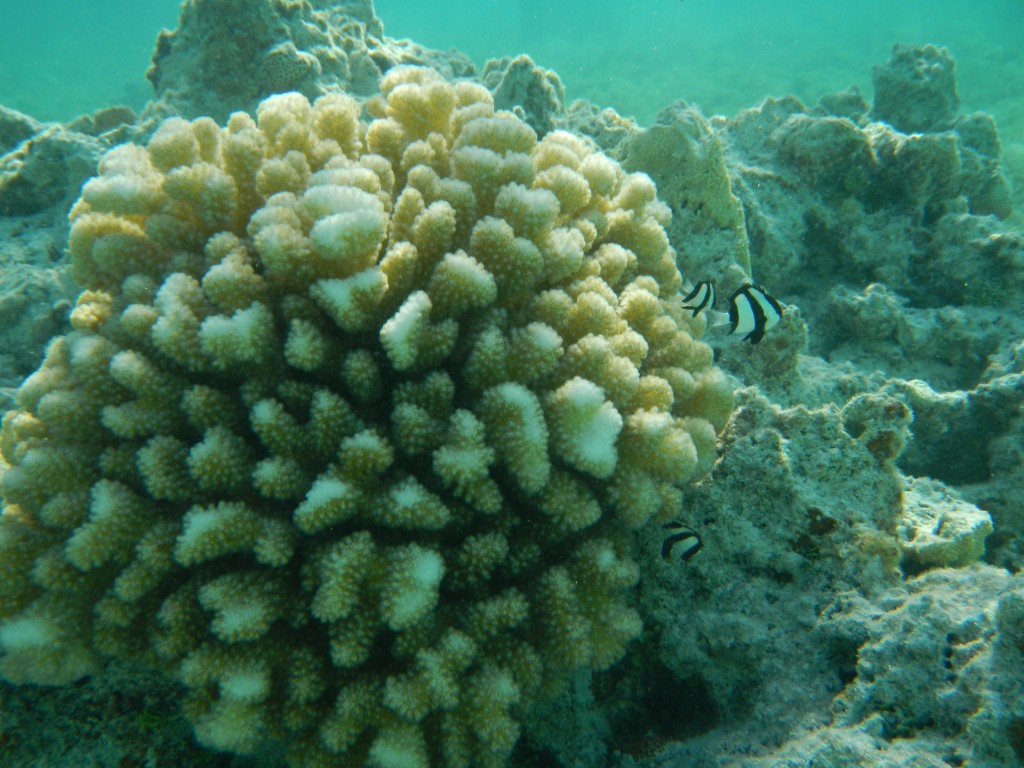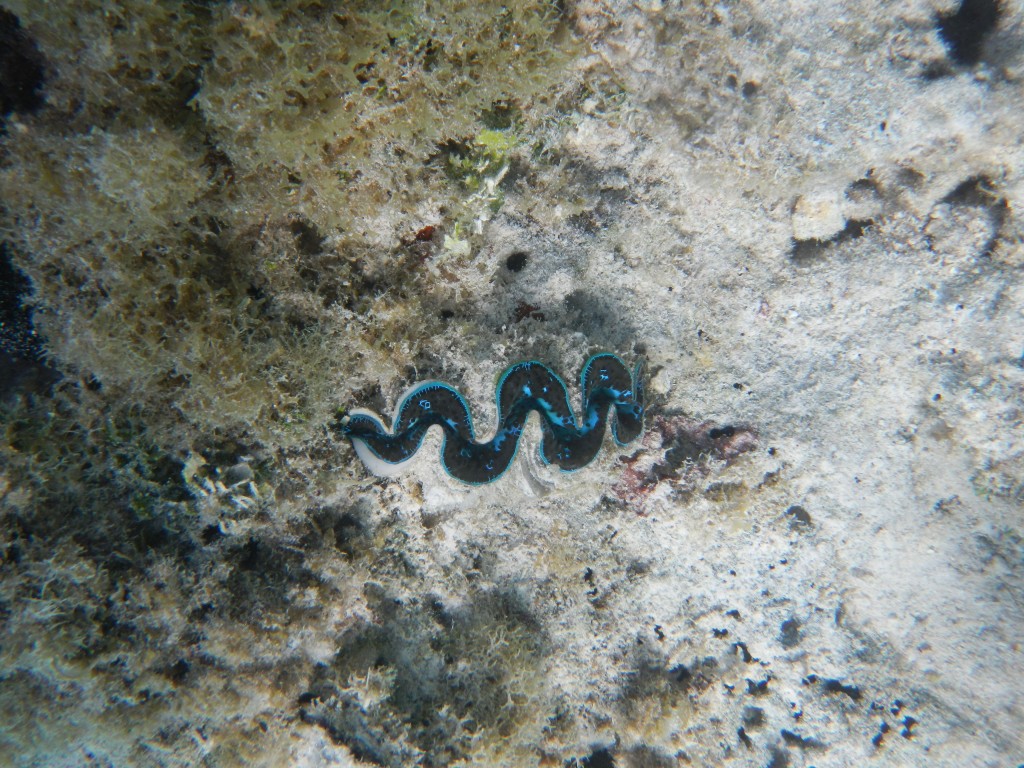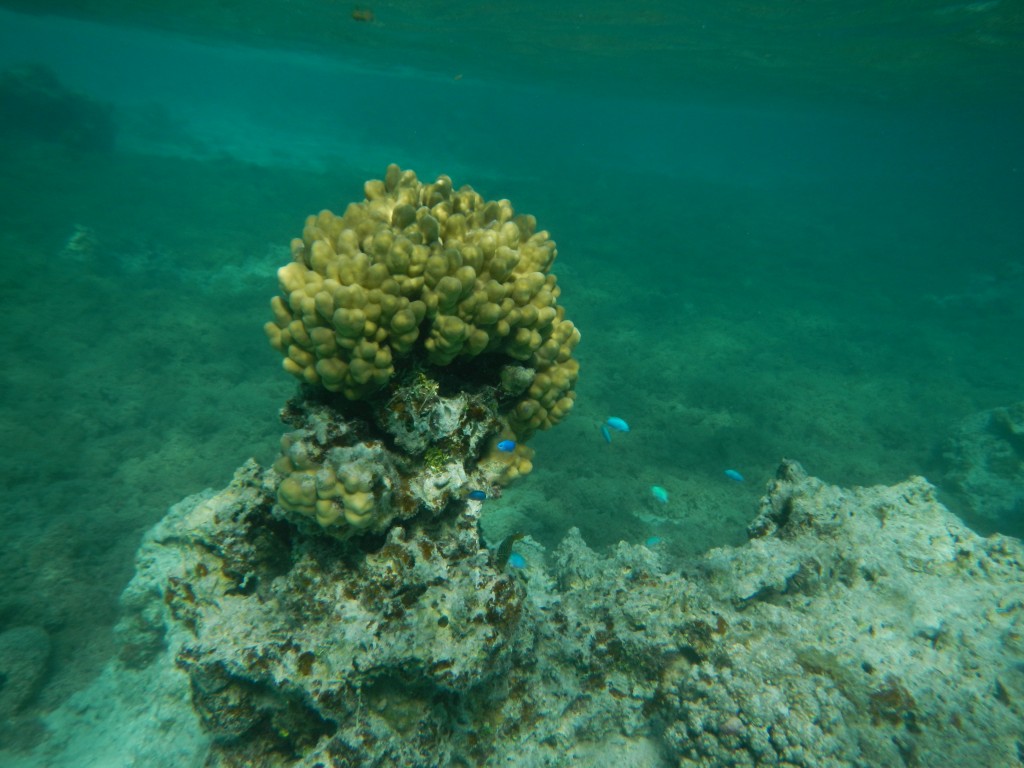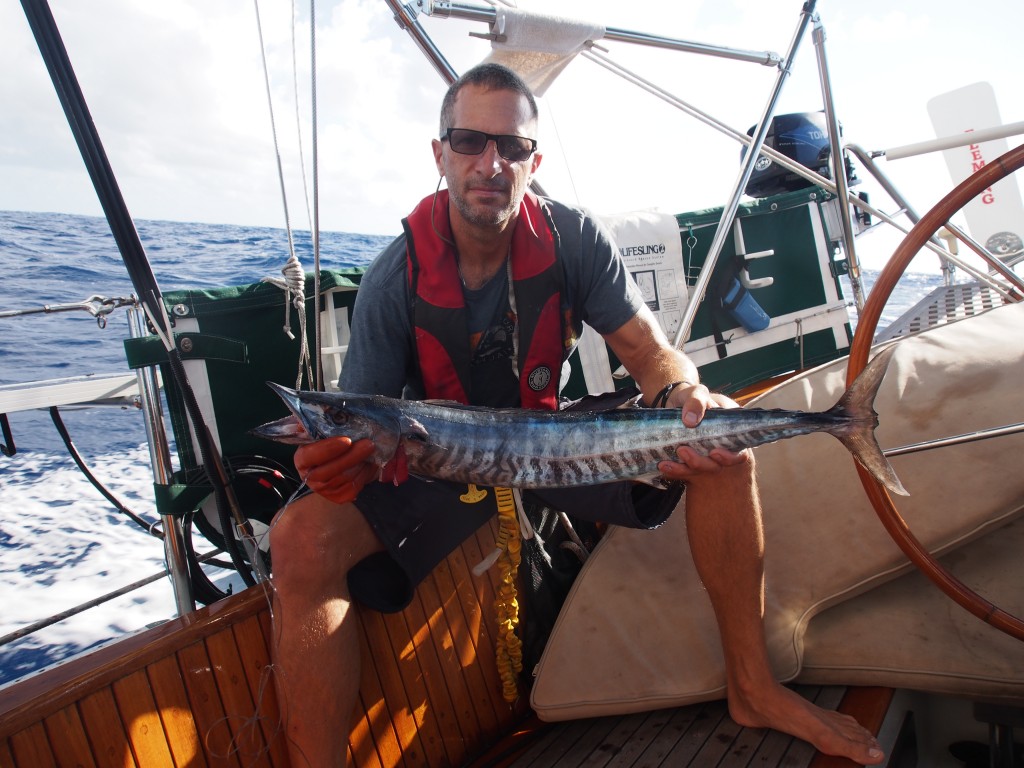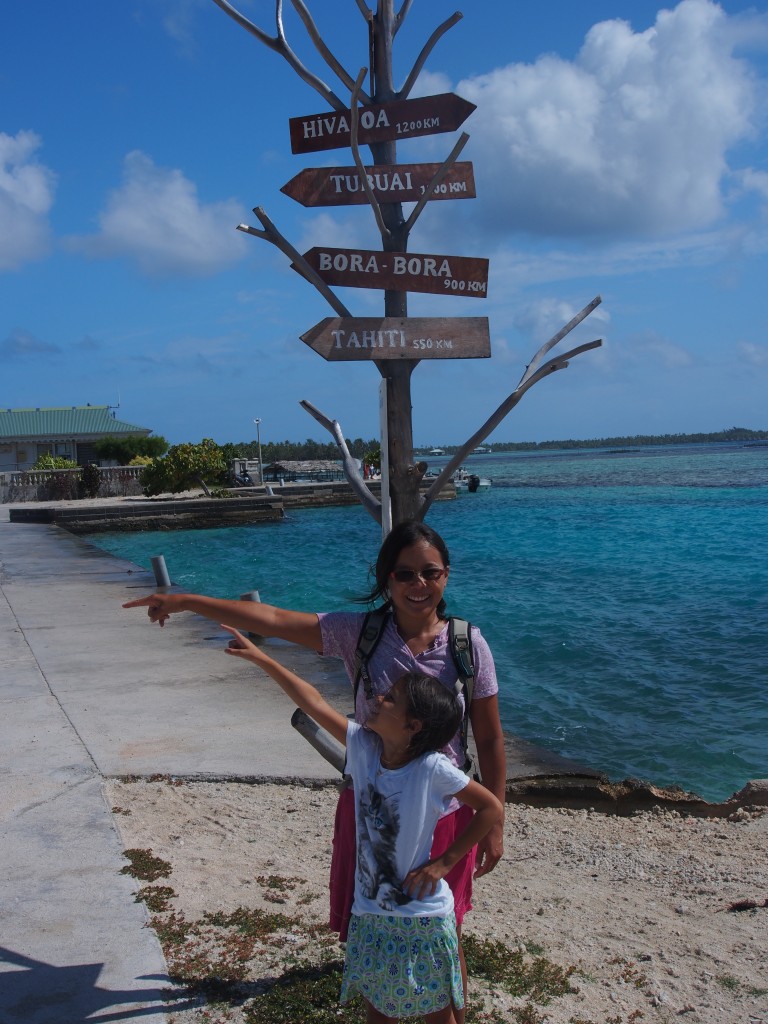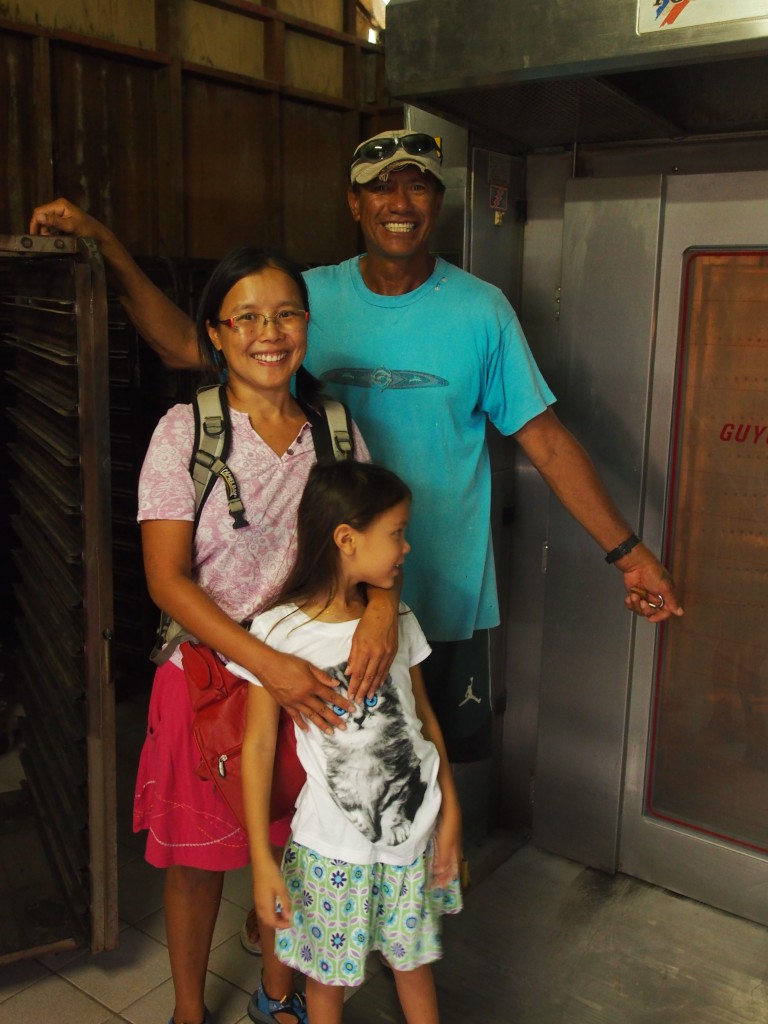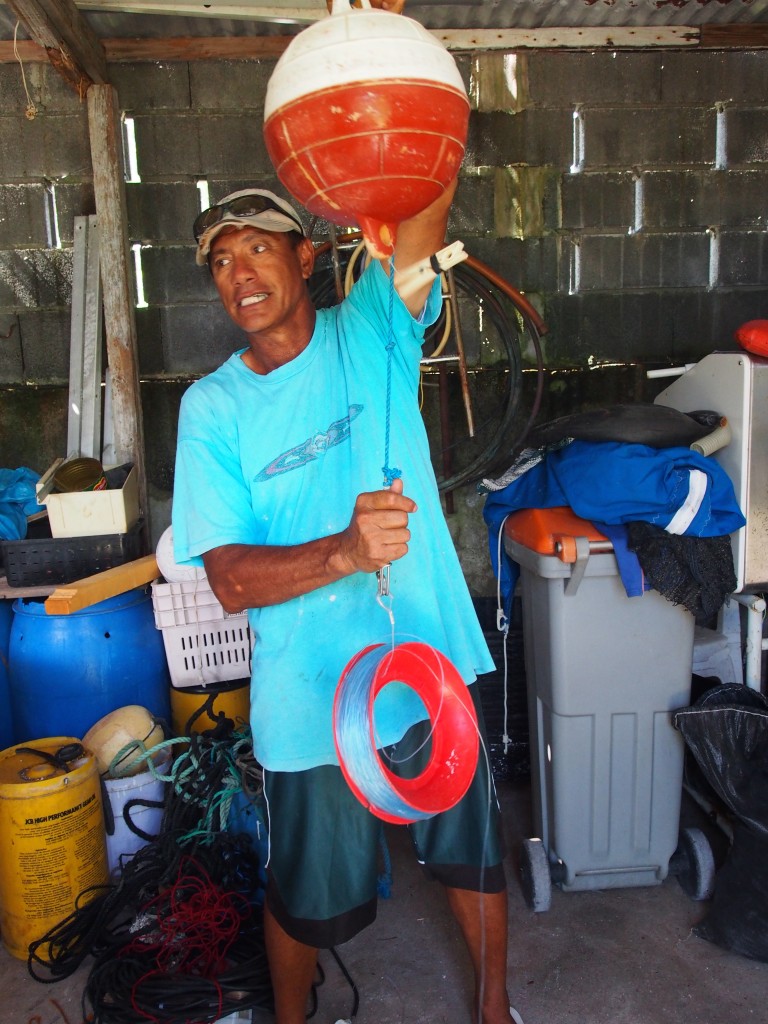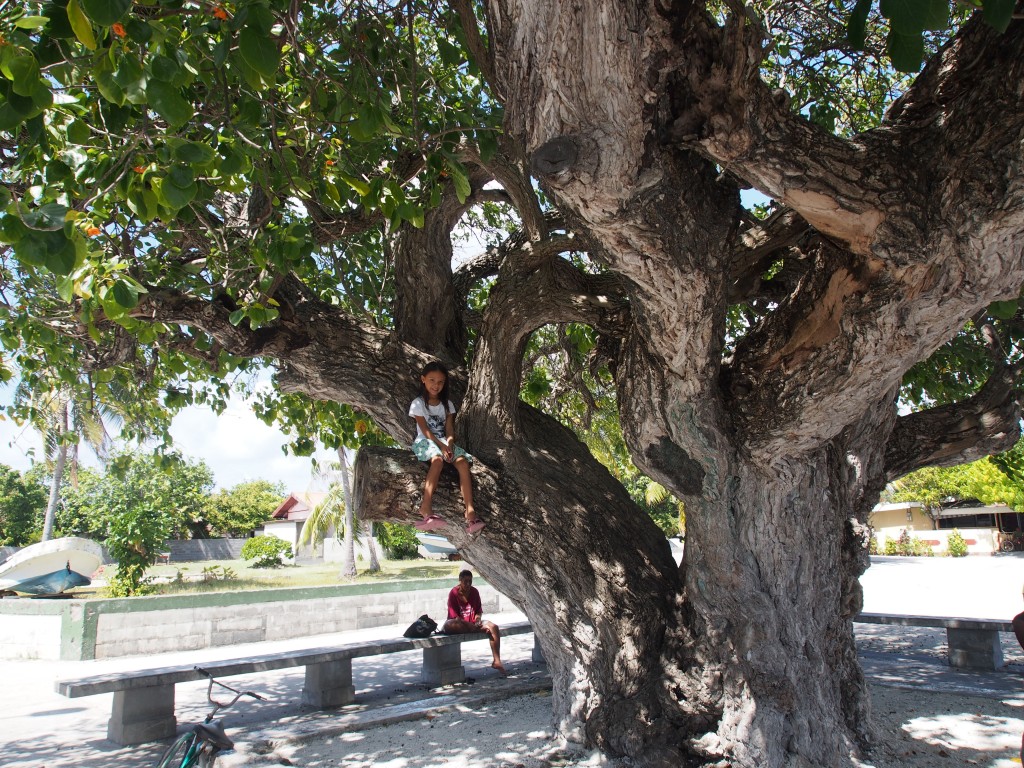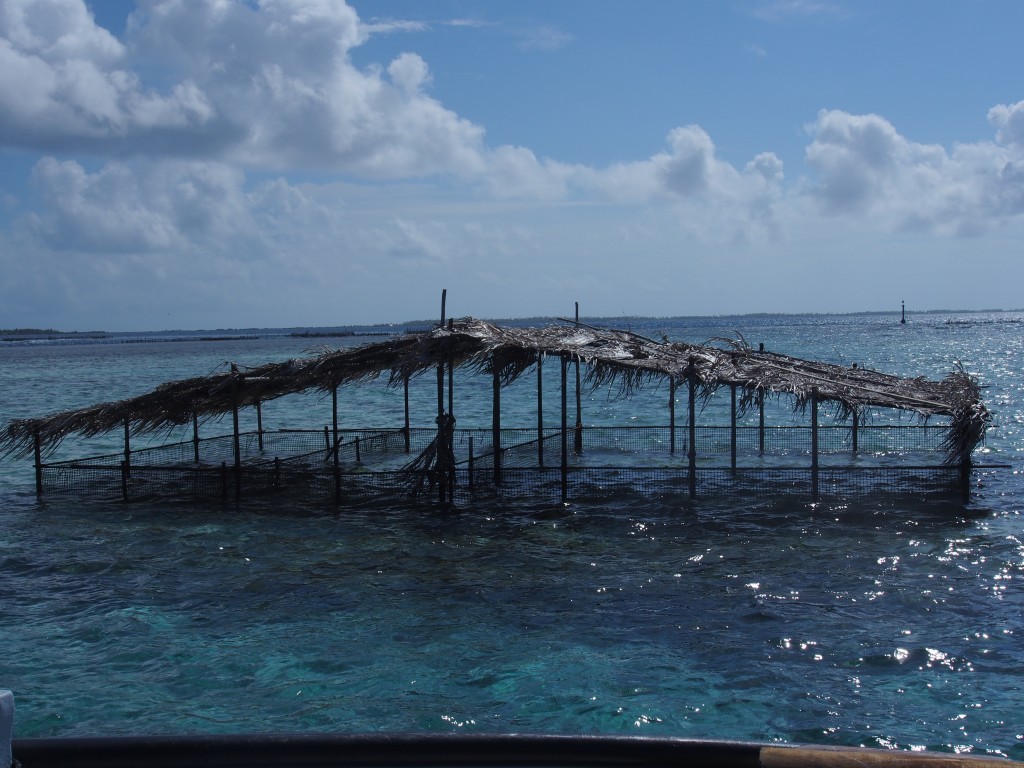We motored 30 miles from Marina Papeete, including a stop at the fuel dock in Marina Tiana to top off the tanks, to an anchorage in Moorea. In the Tahitian language, the name Moorea means “yellow lizard”. The tall peaks and beautiful scenery rivals what we saw around Fatu-Hiva in the Marquesas. Mt. Mouaroa, shown below, is famous from sailing stories and also as the backdrop in the film version of South Pacific. A shallow, fringing reef surrounds Moorea and the passages are well marked with buoys. Once inside the lagoon, the water is calm. We anchored in 30’ of crystal clear water in Opunohu Bay on the north side of the island.
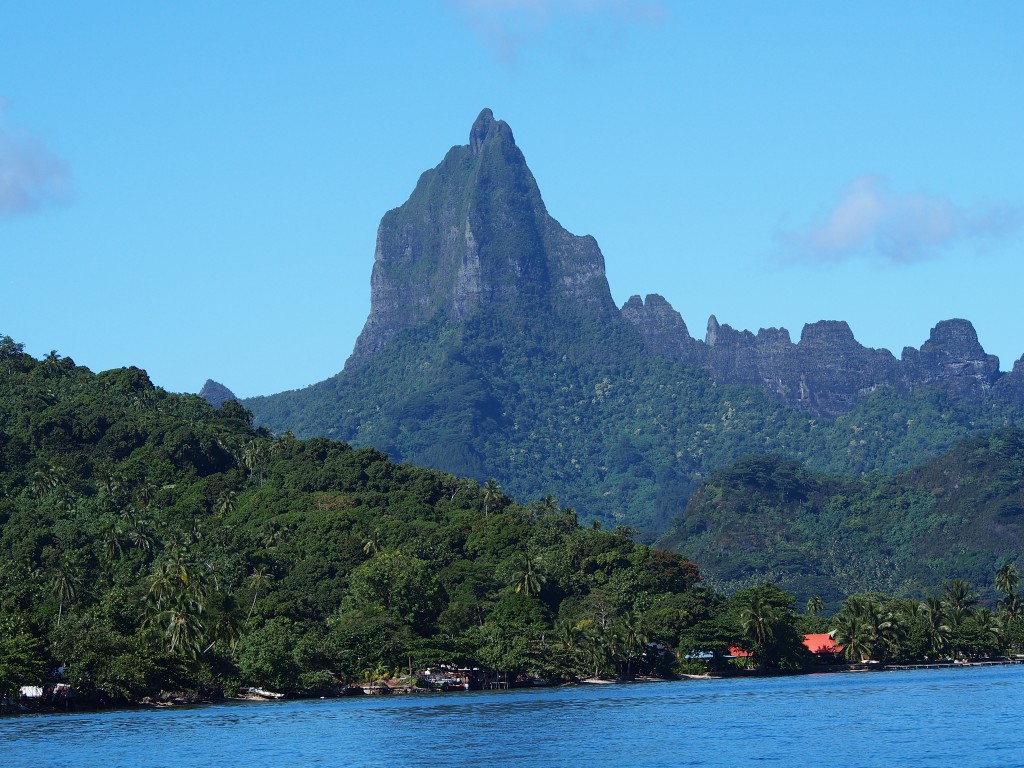
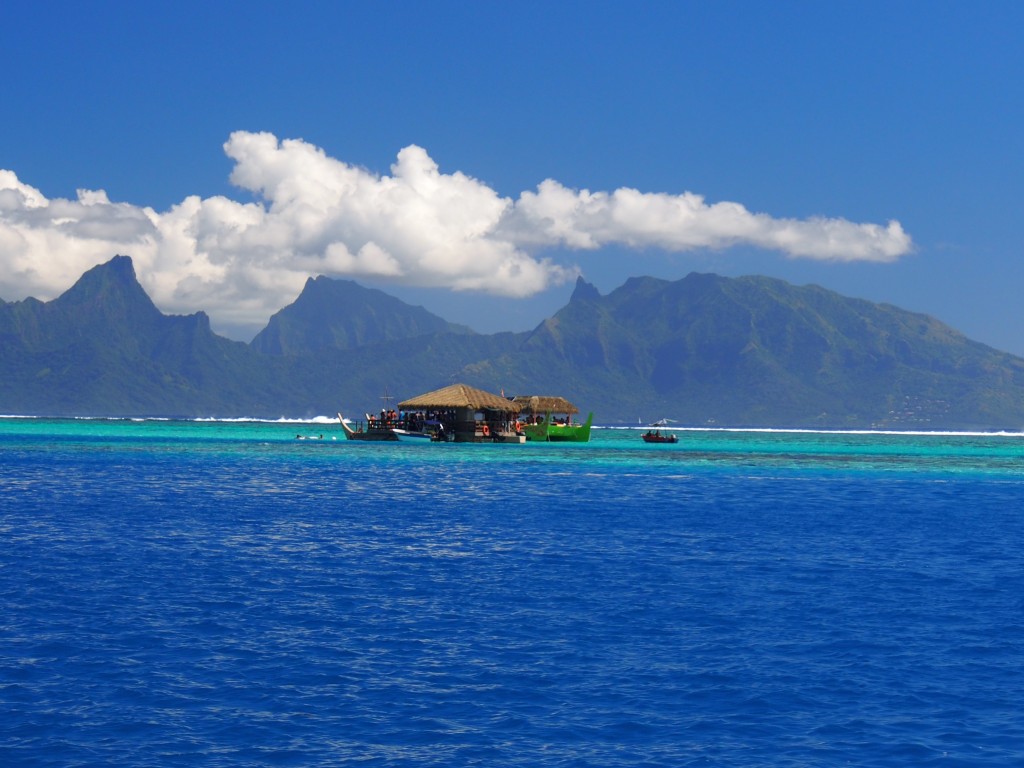
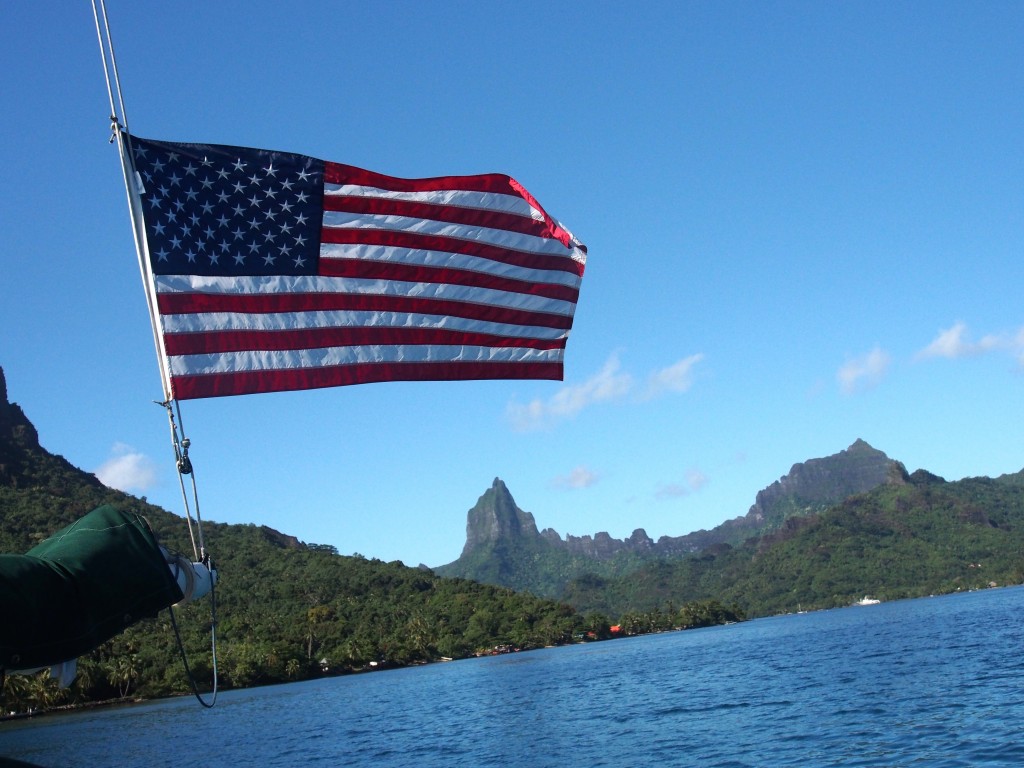
Stingray City
A 30-minute dinghy ride from Opunohu Bay is a sandbar known as Stingray City, located near Taotoi Pass. We arrived a few minutes after a tour boat anchored there so the stingrays and sharks knew it was feeding time. With our snorkel gear on, we jumped in the waist-deep water, anchored the dinghy to a coral head, then swam around the stingrays and black-tipped reef sharks. This was our first up-close encounter with stingrays so it was fun seeing and touching them. They glide so gracefully in the water and are used to humans feeding and holding them. Jacintha has now swam with Whale Sharks near La Paz, Sea Lions near Isla Partida (Mexico), Reef Sharks in Rargiroa (Tuamotus), and now Stingrays in Moorea. The underwater pictures were taken with a GoPro Hero.
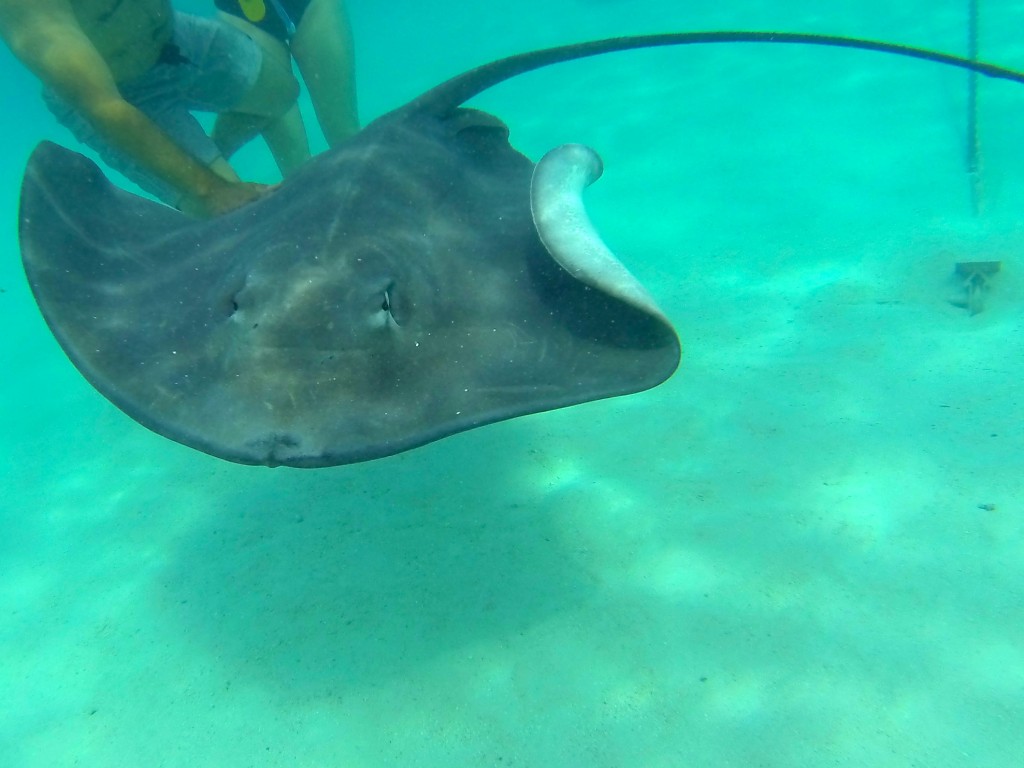
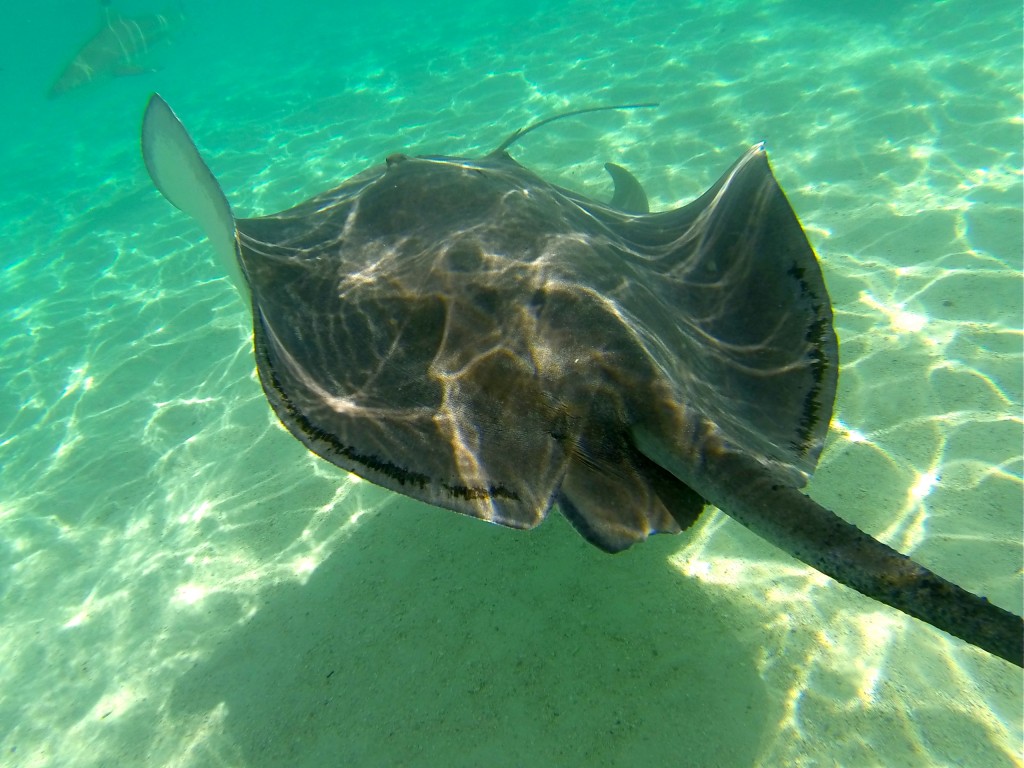
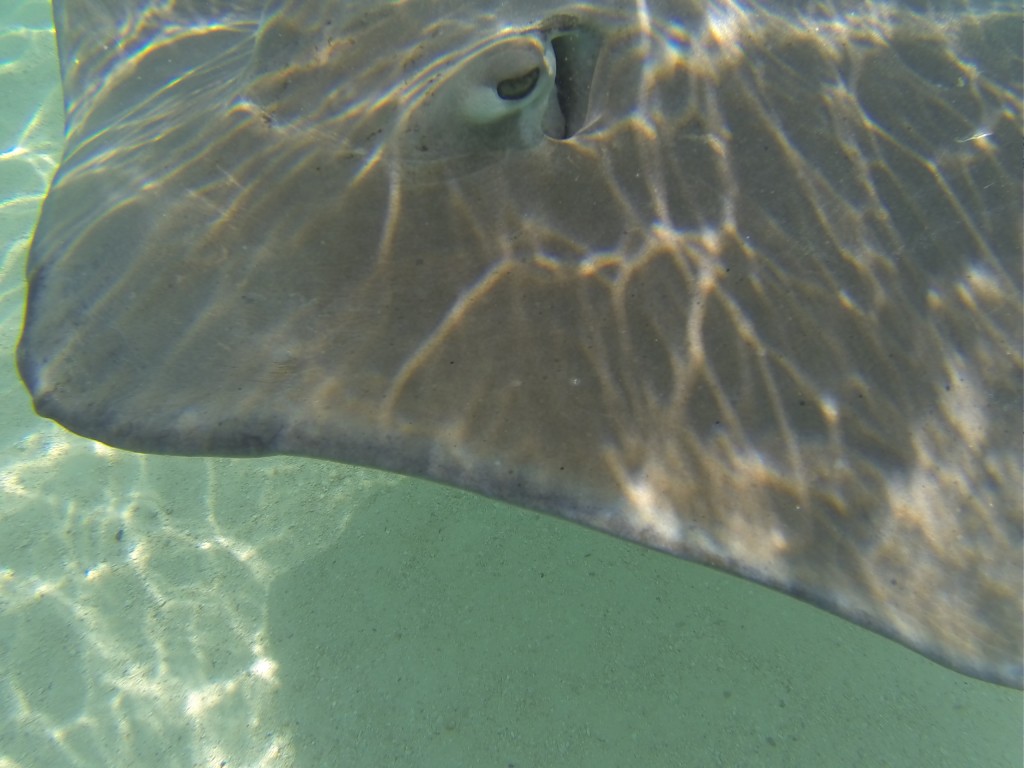
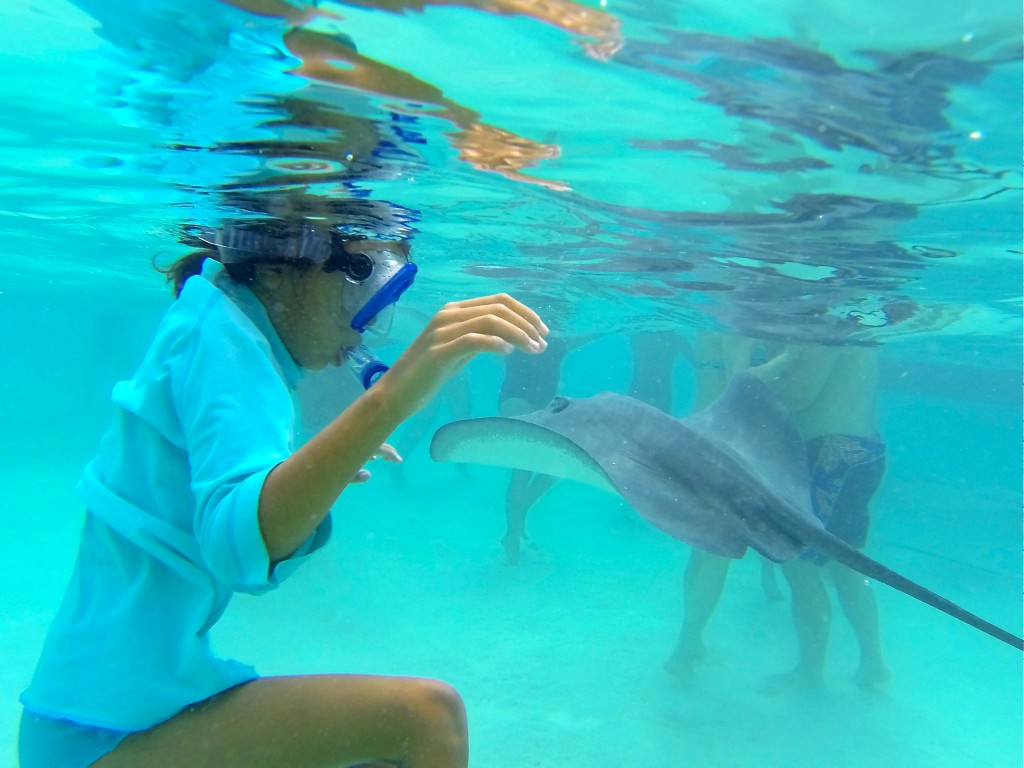
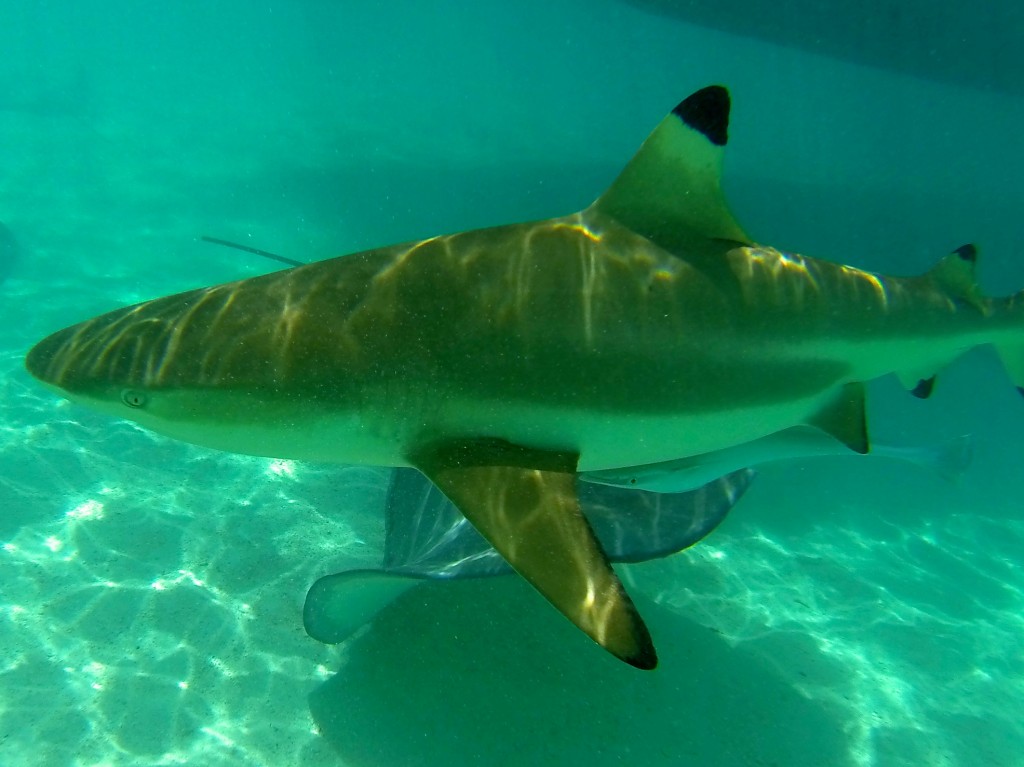
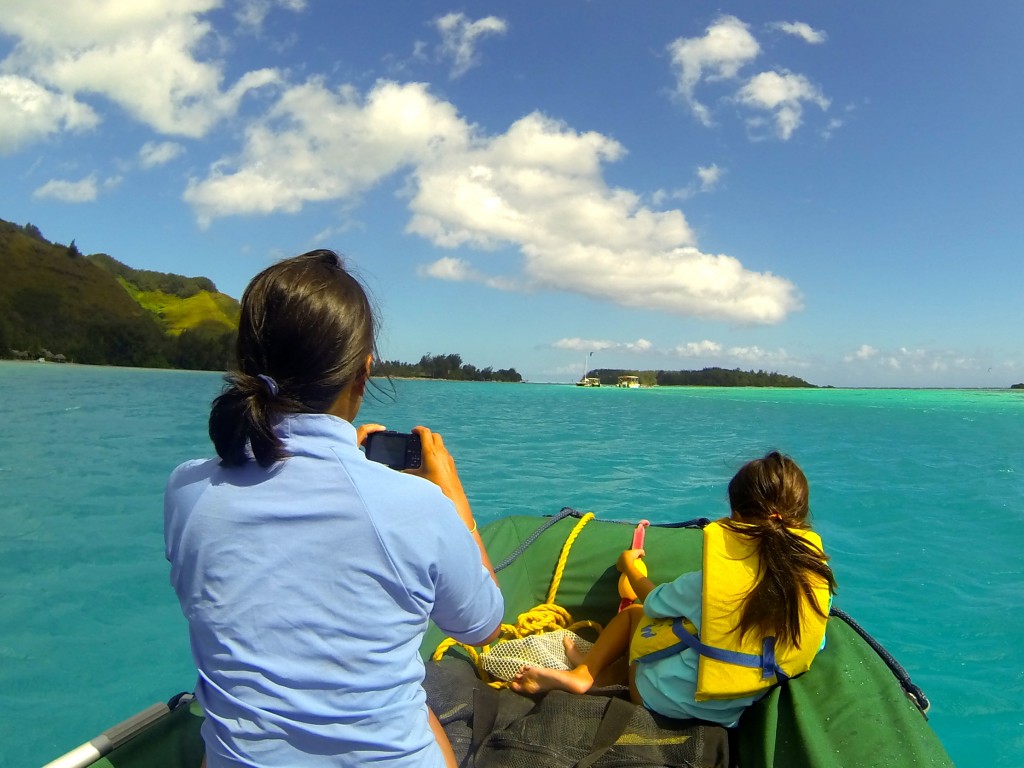
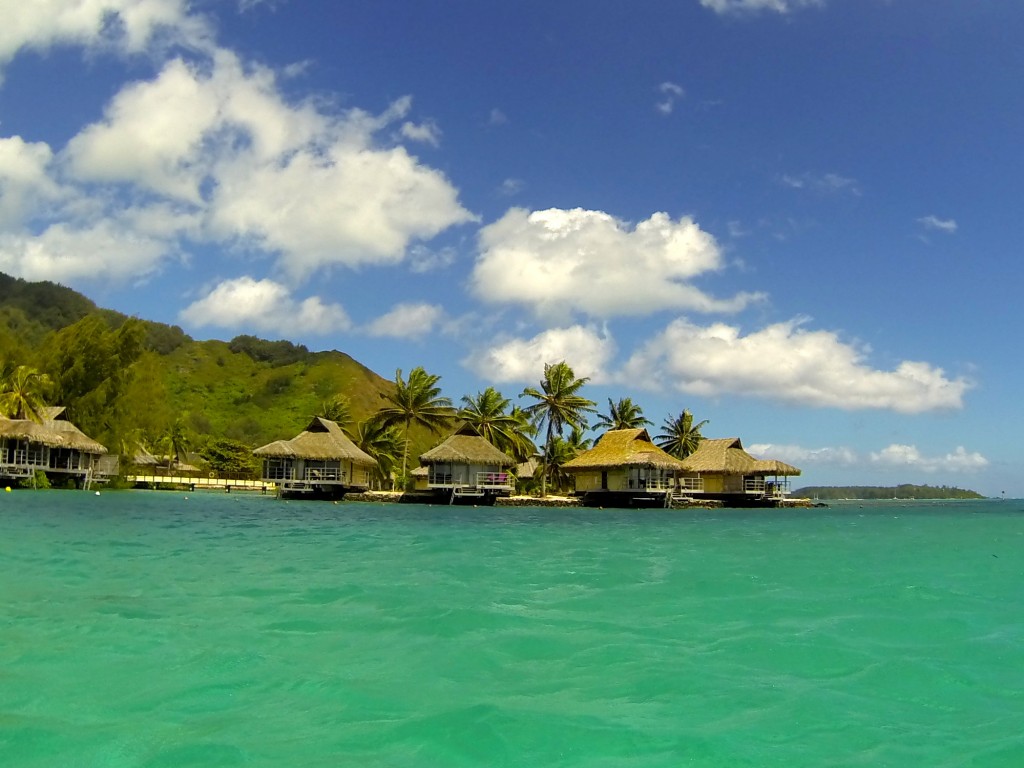
We spent 5 days in Moorea, and most of the time we just relaxed, snorkeled and enjoyed the beautiful scenery that surrounded us. Here are some pictures….
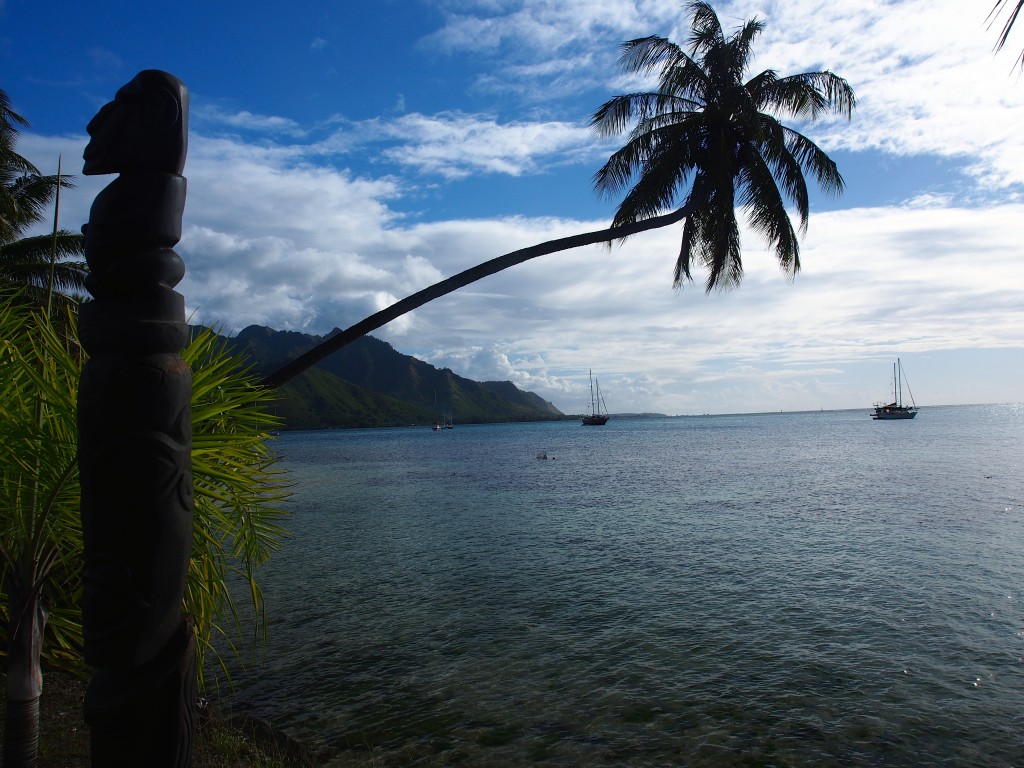
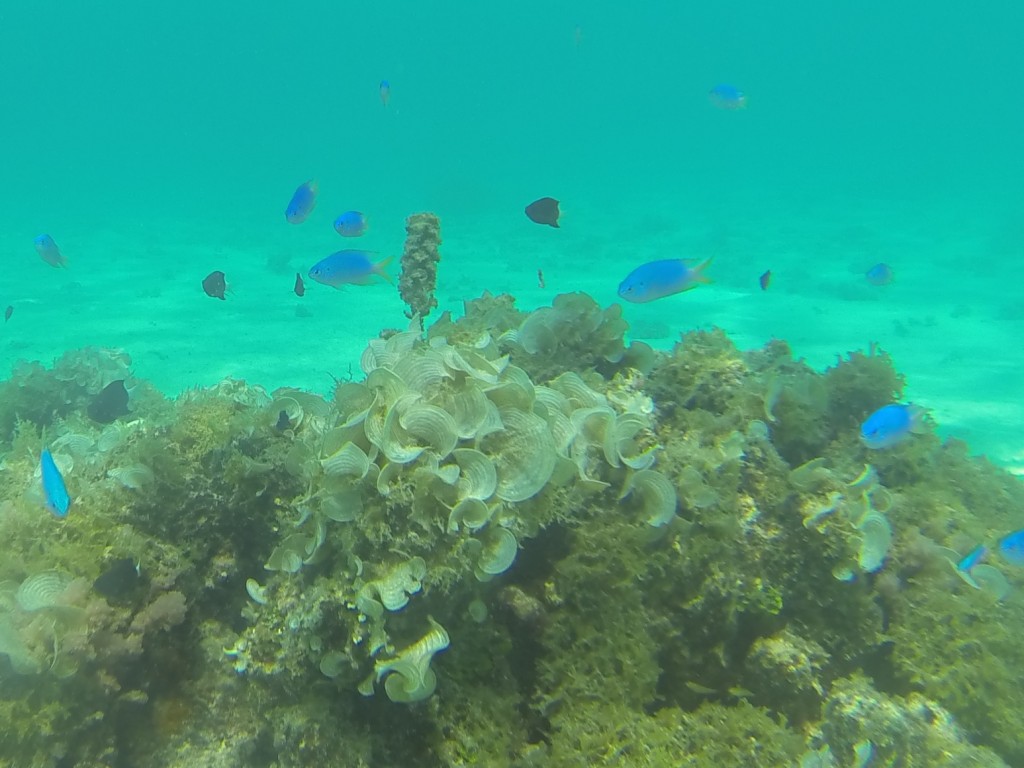
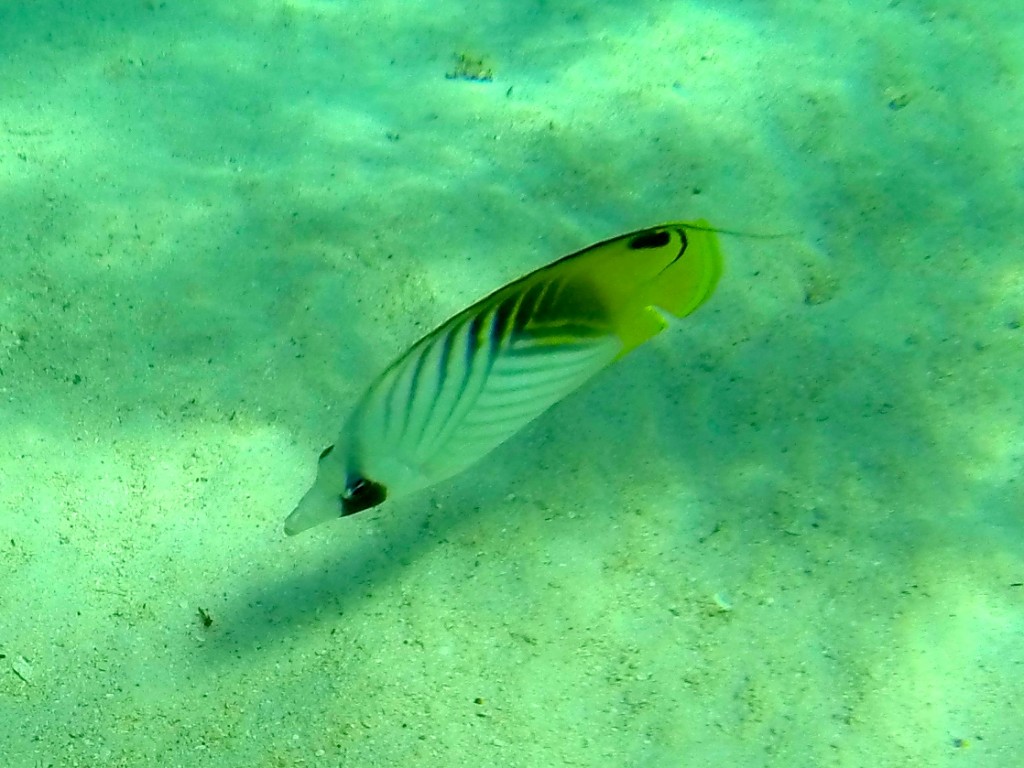
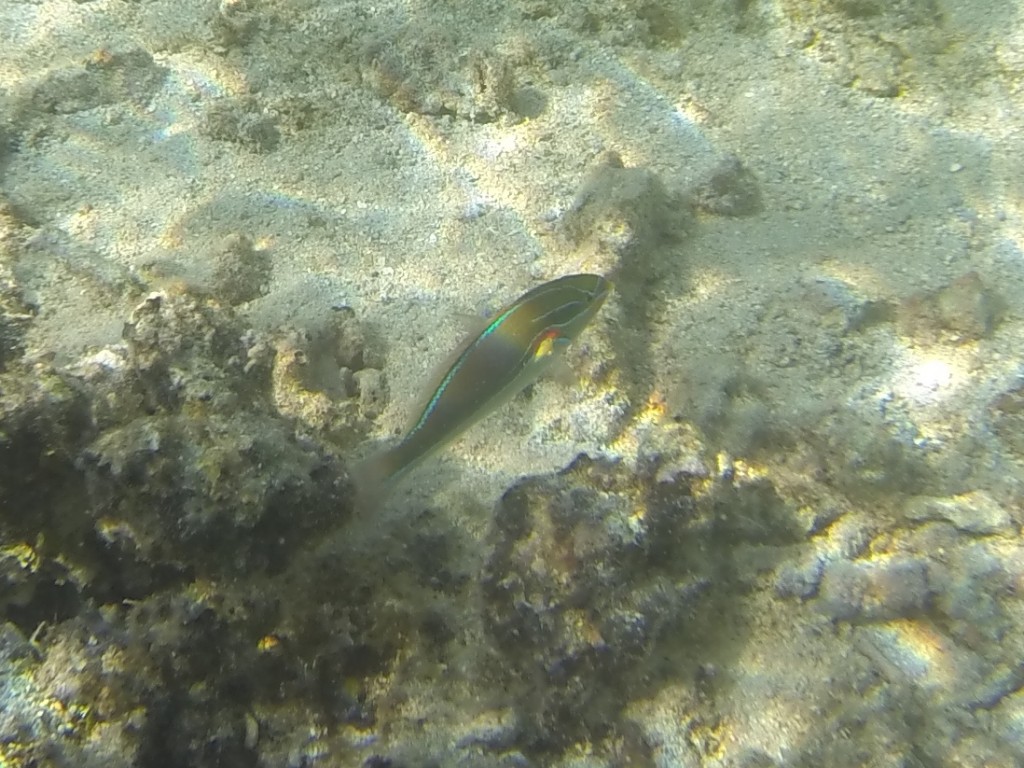
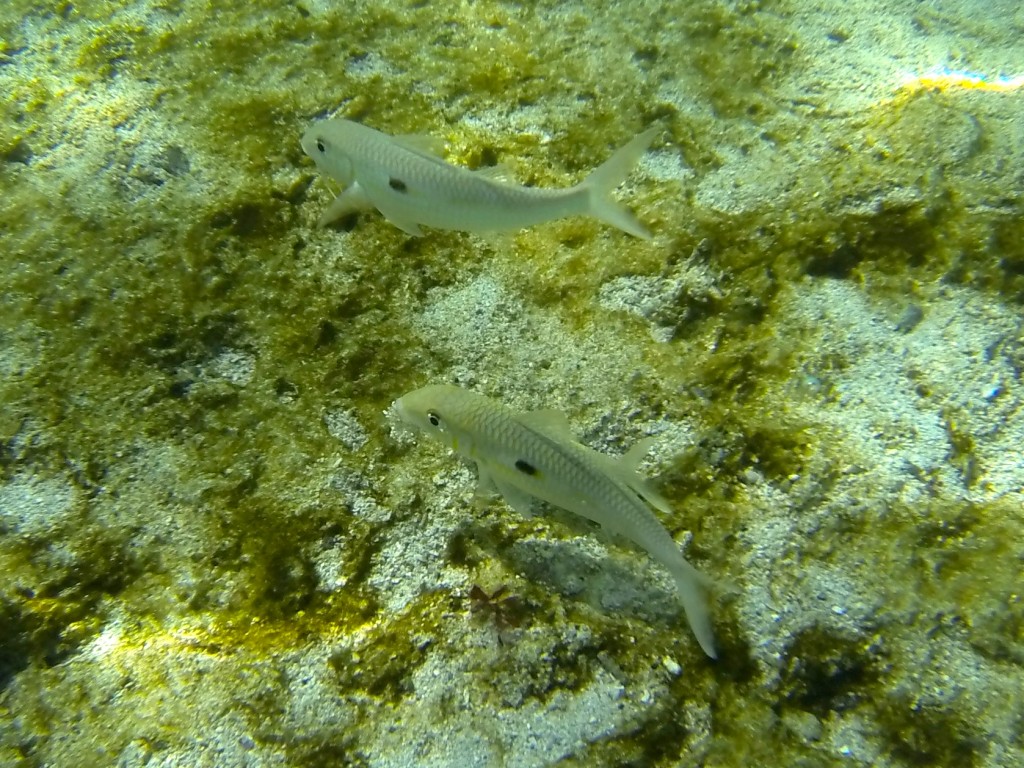
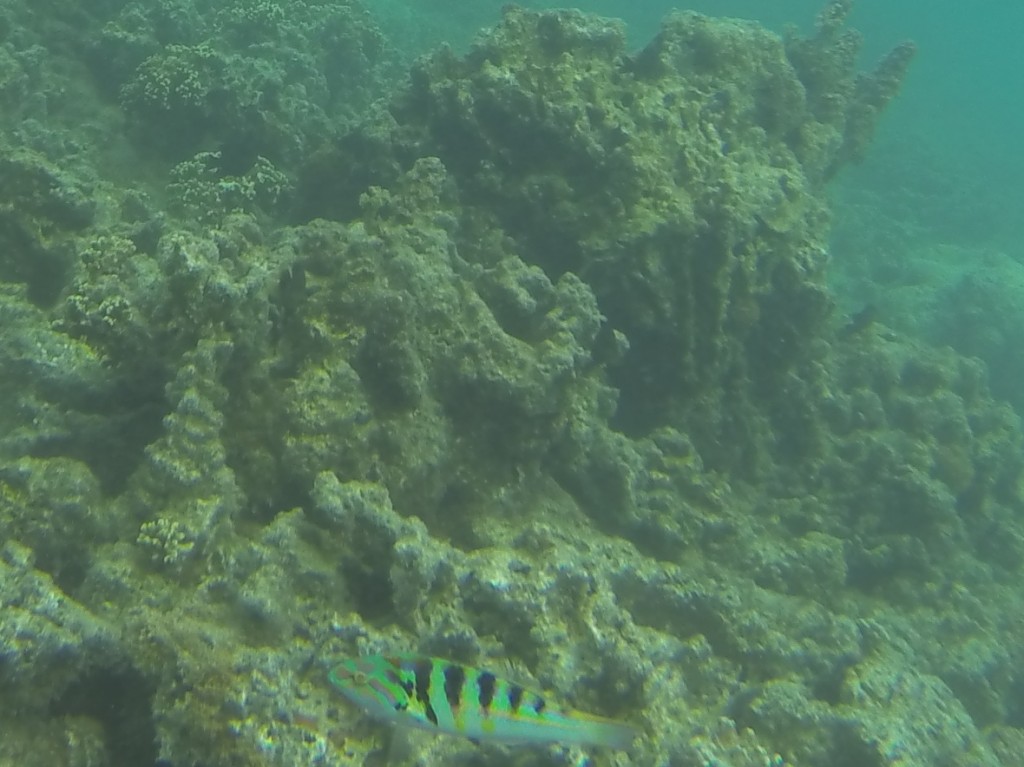
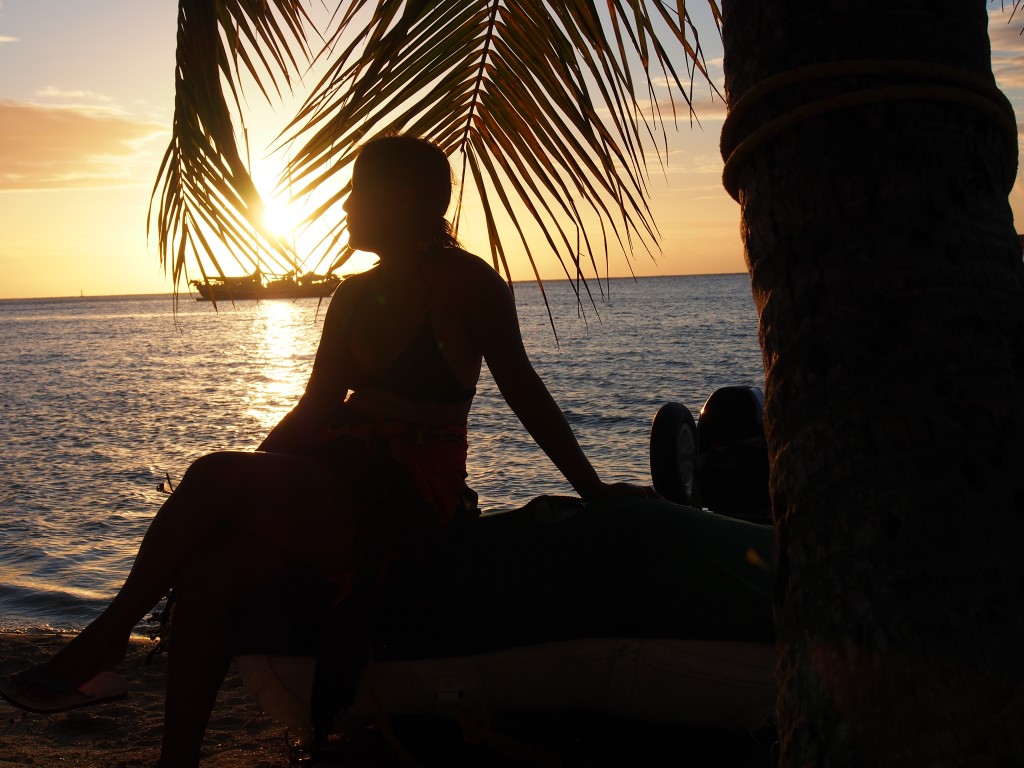
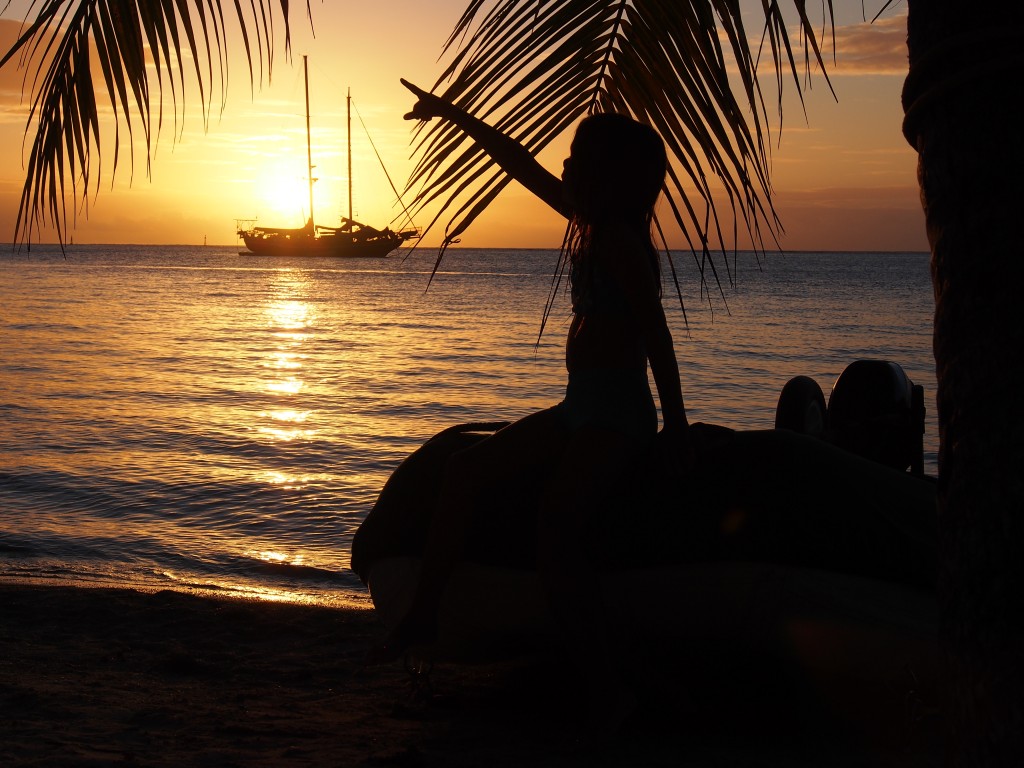
From our anchorage, we drove the dinghy 15 minutes east to the Moorea Hilton. After tying up to the dock, we checked out the over-the-water bungalows and relaxed around the pool, all for the price of buying a few (very expensive) drinks!
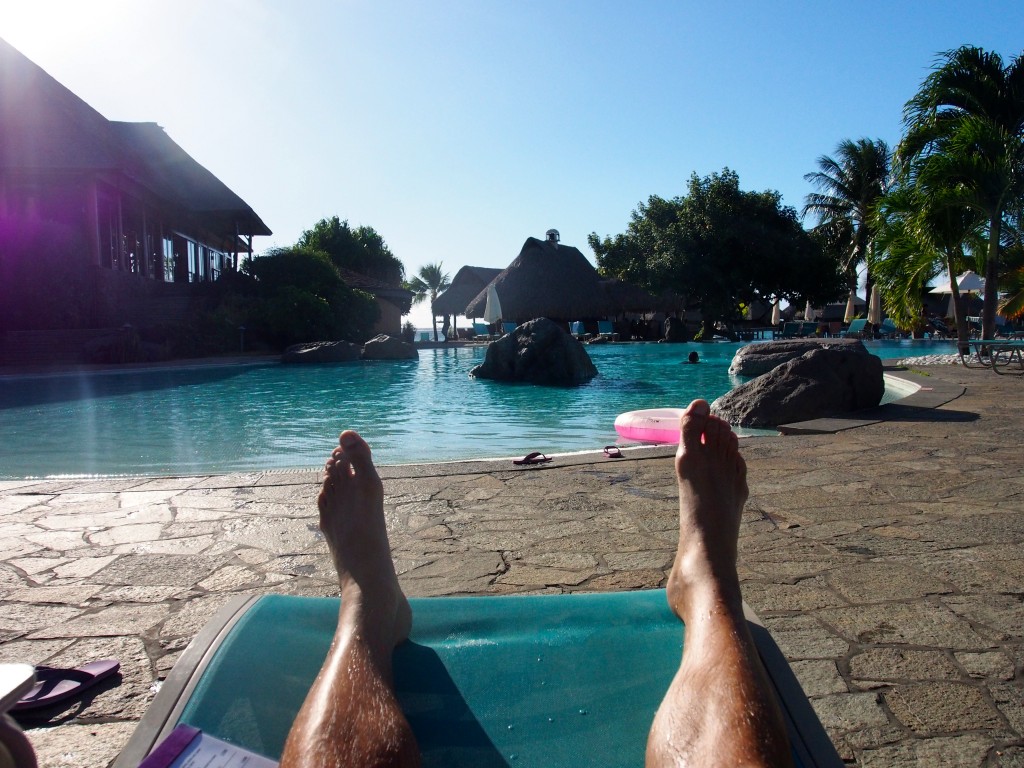
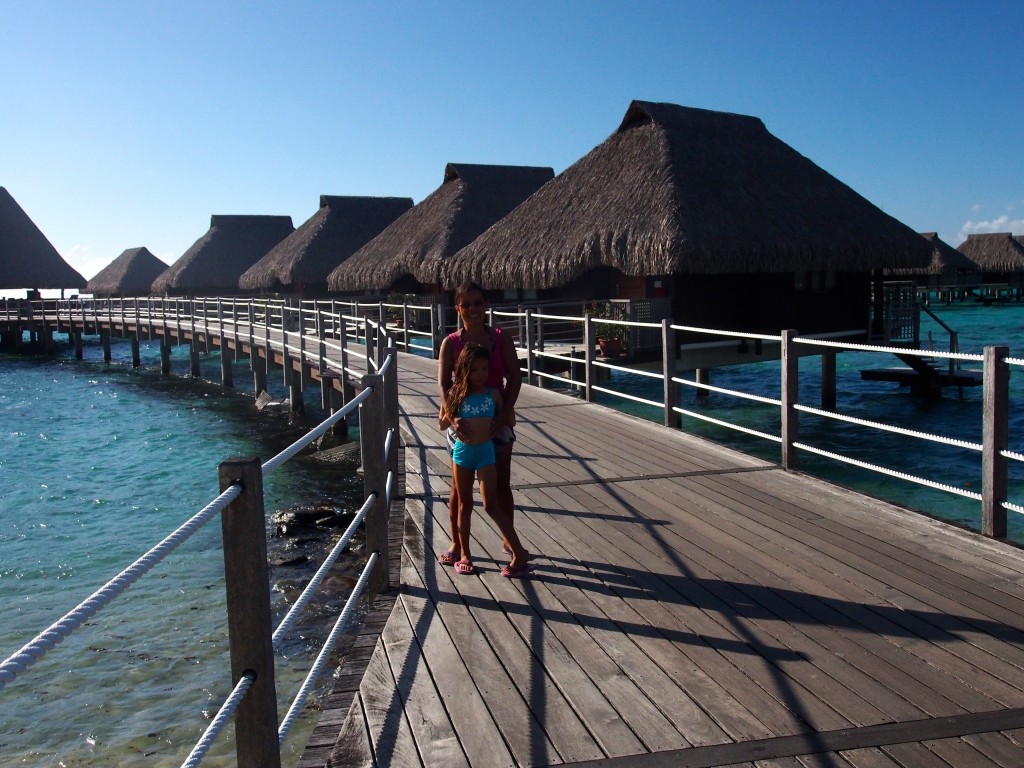
Boat Repairs–The saying that cruising is fixing your boat in exotic locations rang true today!
Macerator Repair
A macerator is a pump for discharging water or waste overboard. Our galley sink needs a macerator since the bottom of the sink is below the waterline, and today it stopped working. The motor would run but the water in the sink wasn’t draining. The pump is located under the sink in the engine compartment, and was not easy to access for removal. Once I got it out and took it apart, I could see why it wasn’t working—10 years of accumulated hair and gunk was wrapped around the cutter and shaft cialis for women. As I rotated the pump by hand, I could also see bits of the impeller that were also broken off. Since I have 2 of these macerators (Jabsco 18590-0000) aboard, one for the galley and one for the holding tank, I had purchased a rebuild kit before leaving Seattle buy kamagra oral jelly. I also had an entire spare used macerator which came with the boat. I decided to swap out the broken one with the spare and even though it was used, I could see the impeller was good and the shaft spun easily. After reconnecting the plumbing and wiring, we turned it on and it worked perfectly well, even better than the old one. Next I took the broken pump and replaced the impeller (it was missing all the blades, which is why it wasn’t pumping anymore!), chopper, gaskets, and housing with parts that came with the rebuild kit. We downloaded a YouTube video for rebuilding a Jabsco 18590-1000 macerator, a newer version of the one we have. Ours is harder to rebuild because the DC motor had to be removed to access the impeller and the springs & brushes were not easy to re-install. After finishing, I packed it away with the spares without testing it because it should not be run dry, but hopefully it will work if ever needed.
LED Light Fix
Since most of the day was spent fixing the macerator and it was too late to go ashore, I promised Karen we would spend an extra day on Moorea to make up for it, then tore into another project. A broken LED strip light had stopped working about a month ago. We have several of these on the boat and the broken one was one we mounted to a yardstick and used as a portable light. They have 40 high-intensity LEDs on a 12” strip that provides a lot of light—I used it when working on the engine and Karen used it when sewing. I was going to throw it away but decided to take it apart to see what I could find. Besides the 40 LEDs, the light contains a dozen components—resistors, capacitors, diodes, inductors, and a 5-pin controller. I found that one of the inductor leads was broken off from its solder pads. The wire-wound inductor was far too small and fragile for my big soldering iron, but I noticed that shorting the 2 pads with a screwdriver caused the LEDs to turn on. The inductor was right next to a capacitor, and one reason for it would be to low-pass filter a signal to remove noise. An open would not pass the signal on, whereas shorting the inductor would remove the filtering function but still pass the signal on. I tried soldering a wire across the pads, but was unable to get a good solder joint, so I cut a piece of metal from a terminal eye and taped it across the inductor pads. And so (being in French Polynesia) VOILA, it worked!
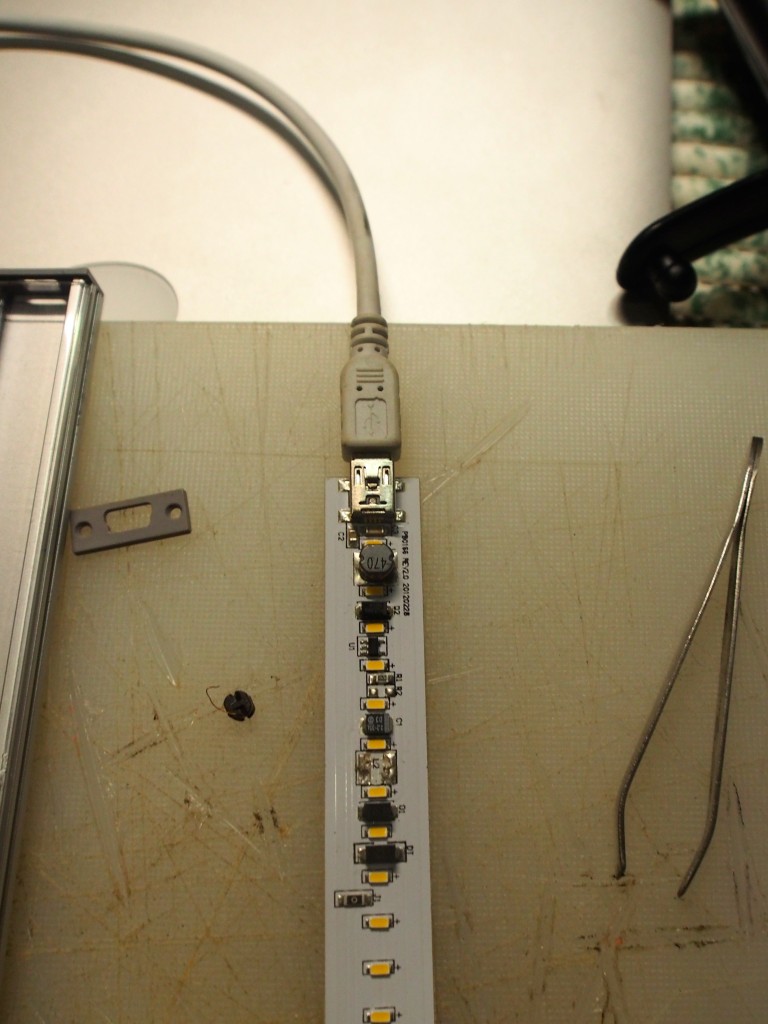
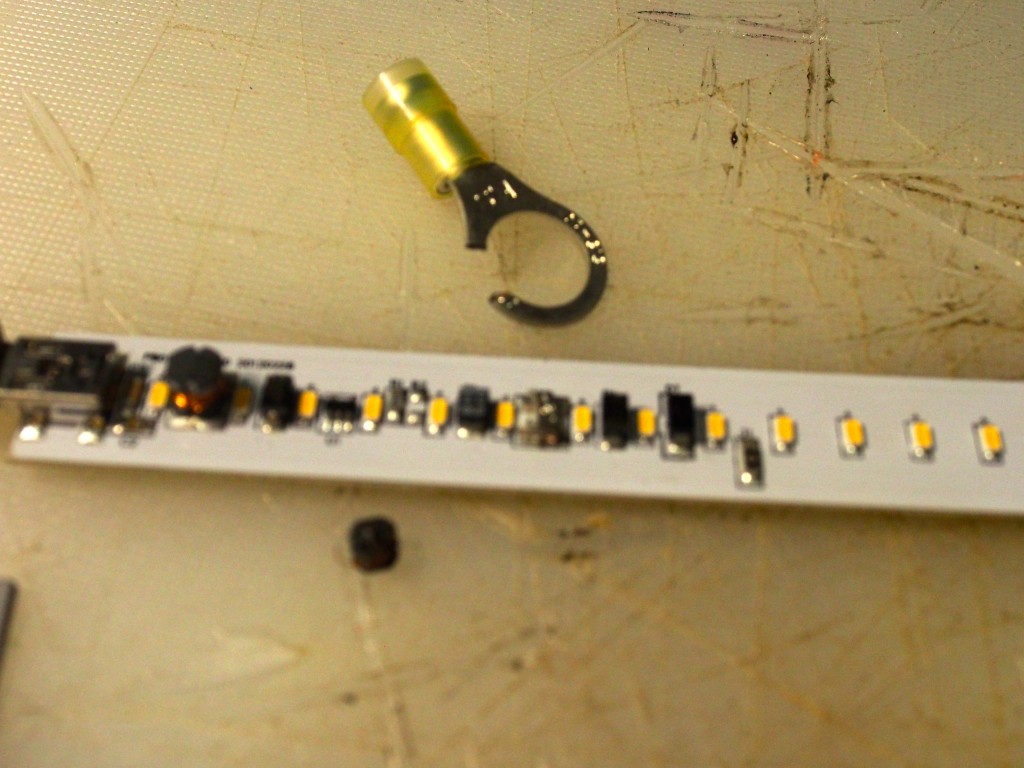
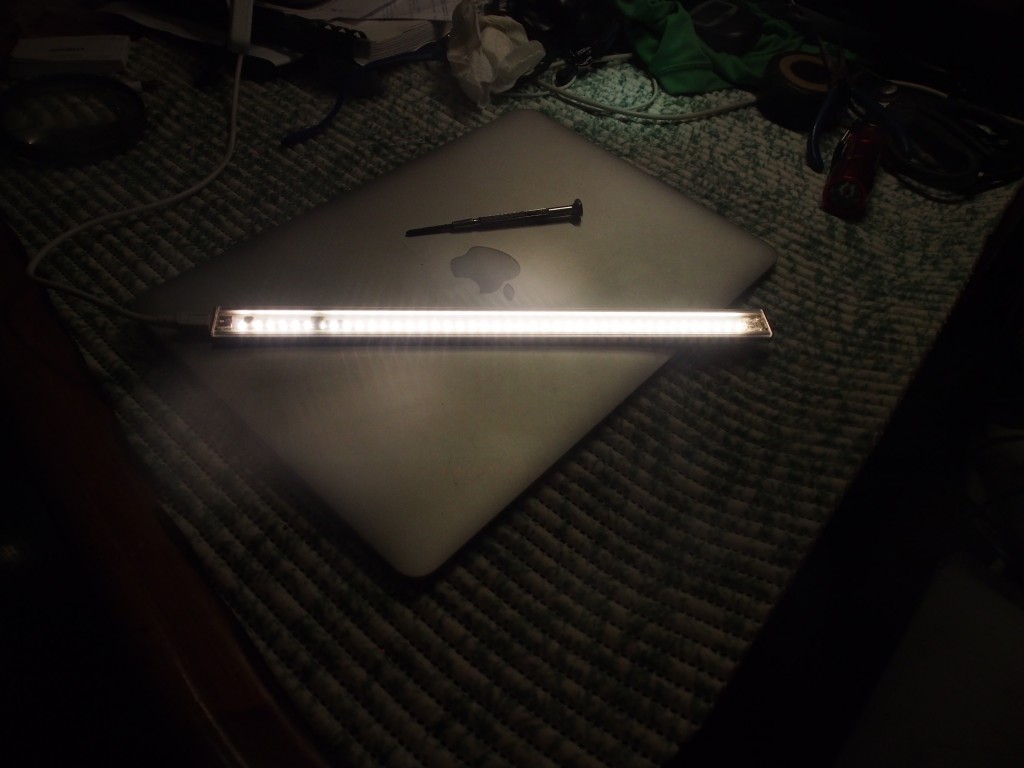
Bilge Pump Re-build
Another boat project! While searching for the macerator re-build kit, I found 2 kits for re-building a Jabsco 36600-0000 pump. We have 2 of these on the boat—one for the shower pump, which rarely gets used since we shower on deck, and one for the bilge pump, which gets used more often for pumping surface water from the bilge. These pumps, probably 30 years old, are diaphragm pumps driven by a DC motor via a belt. The re-build kit contained a valve set, diaphragm, pulsation dampers, and belt. As usual, removing the pump was the hardest part of the job since it lives in a tight spot in the lazerette. The entire re-build took about 3 hours.
